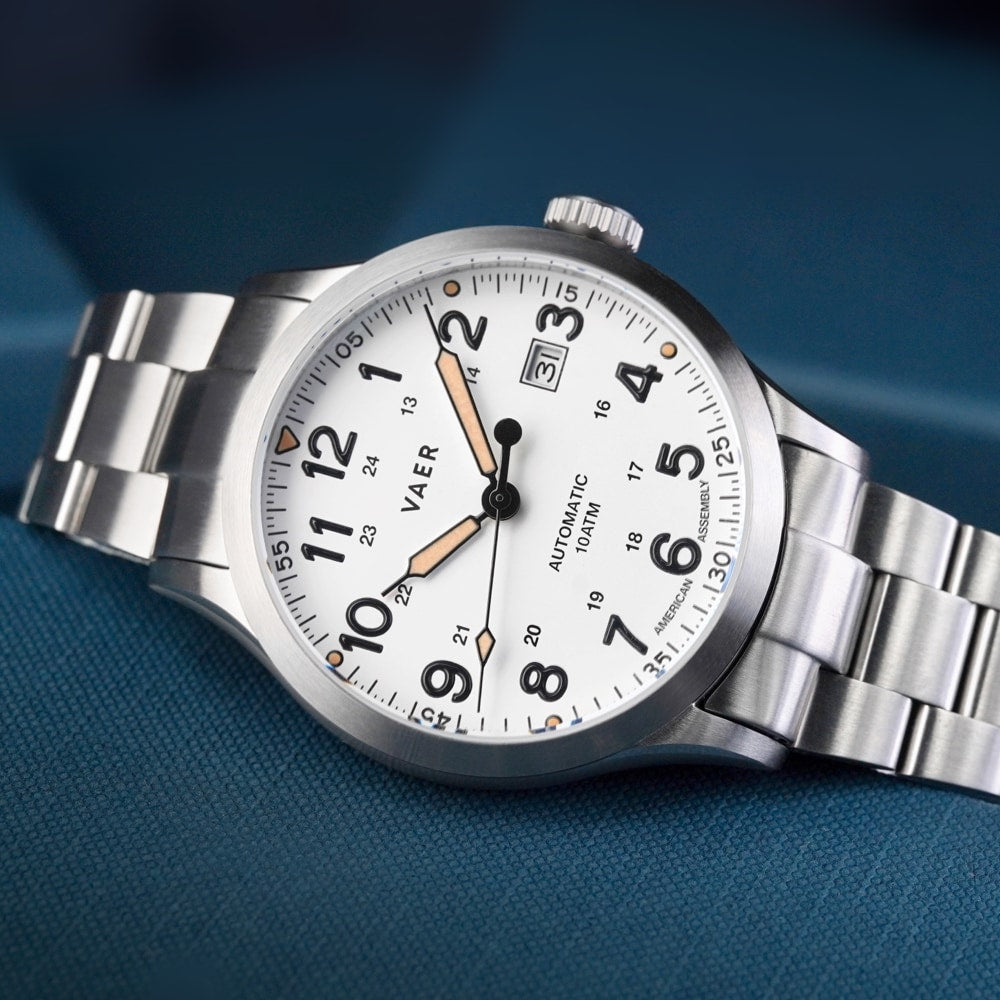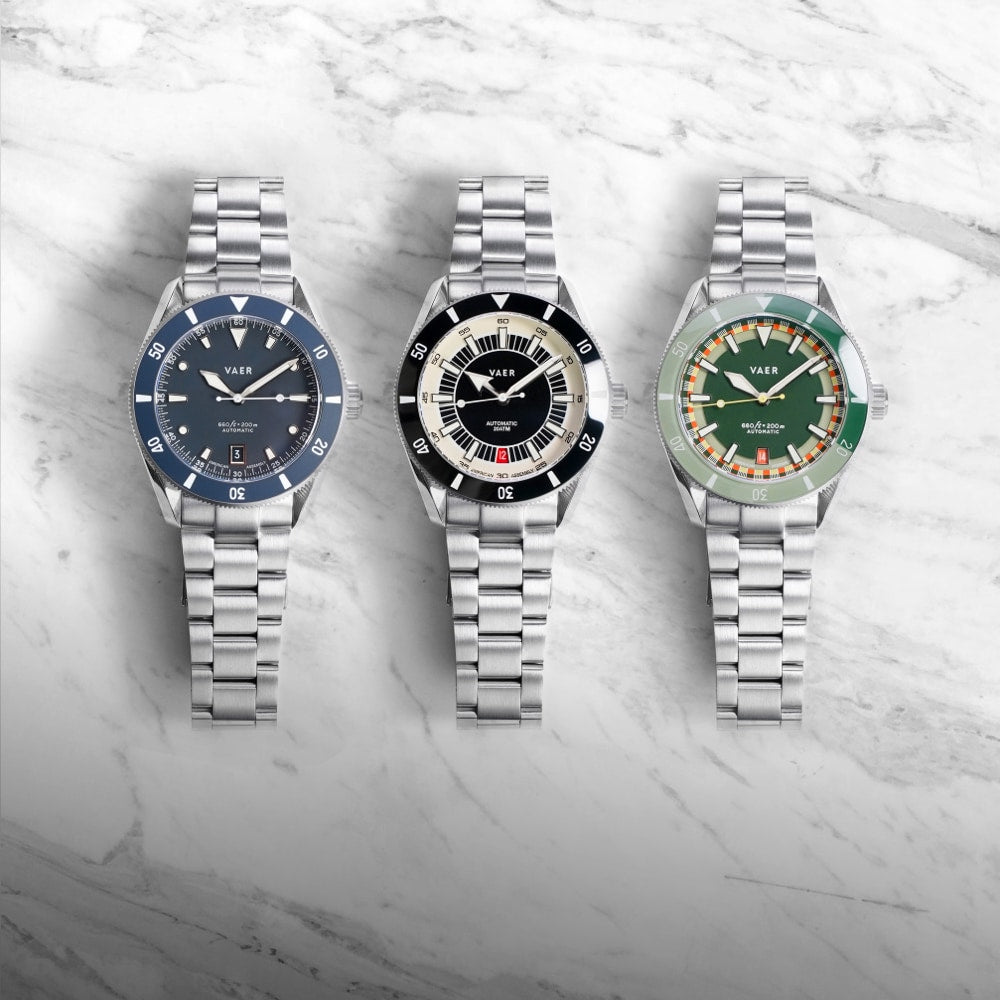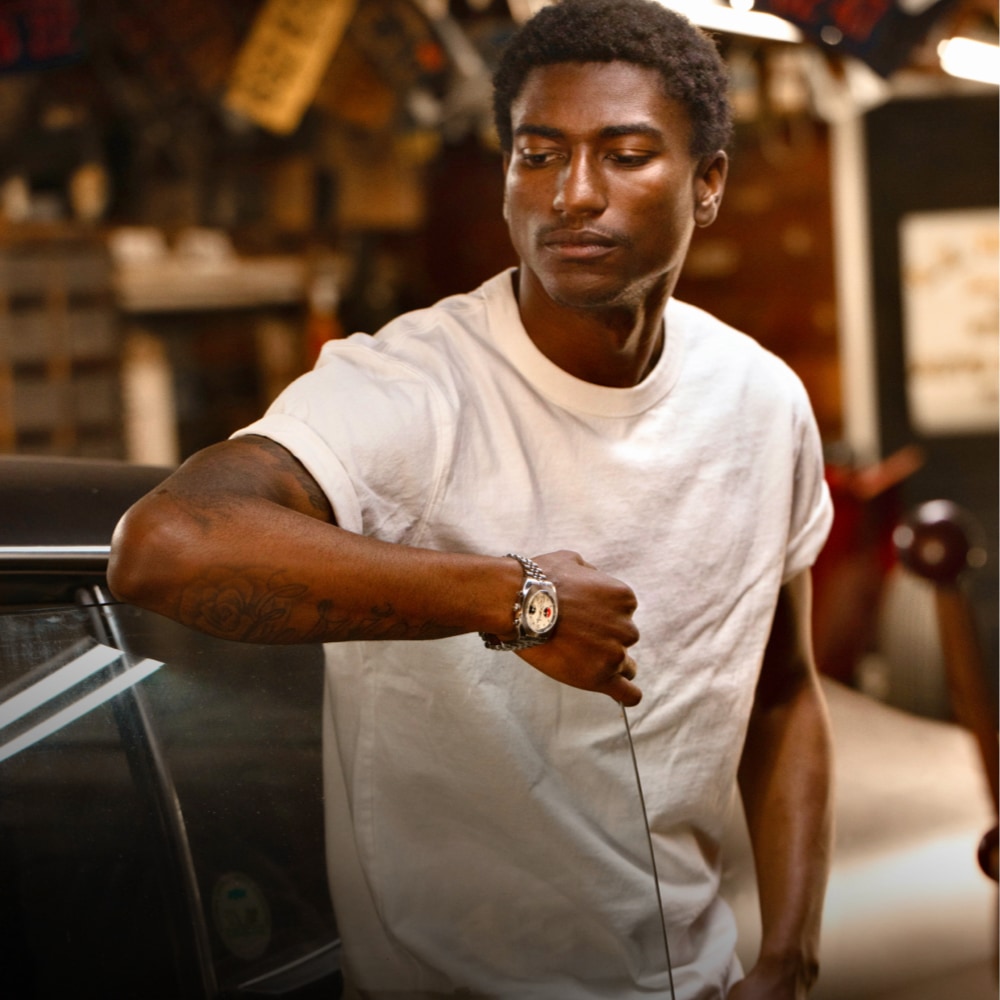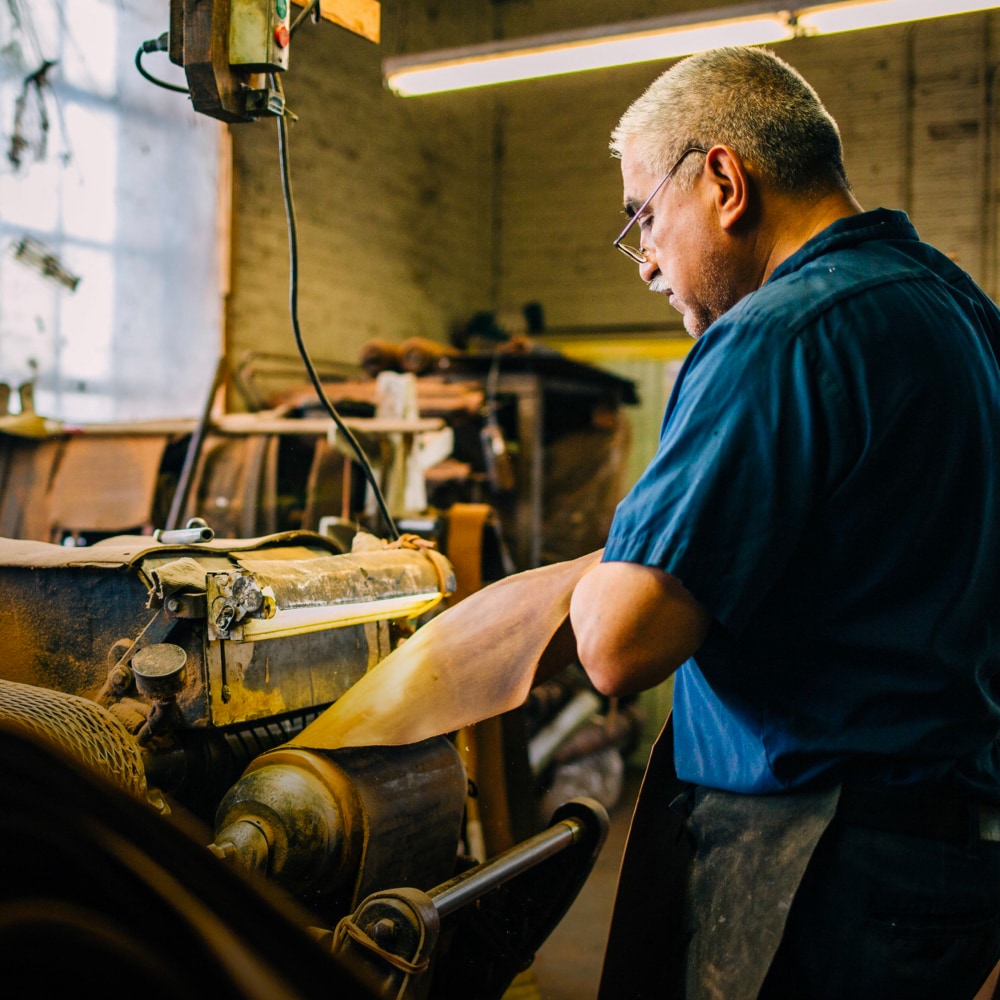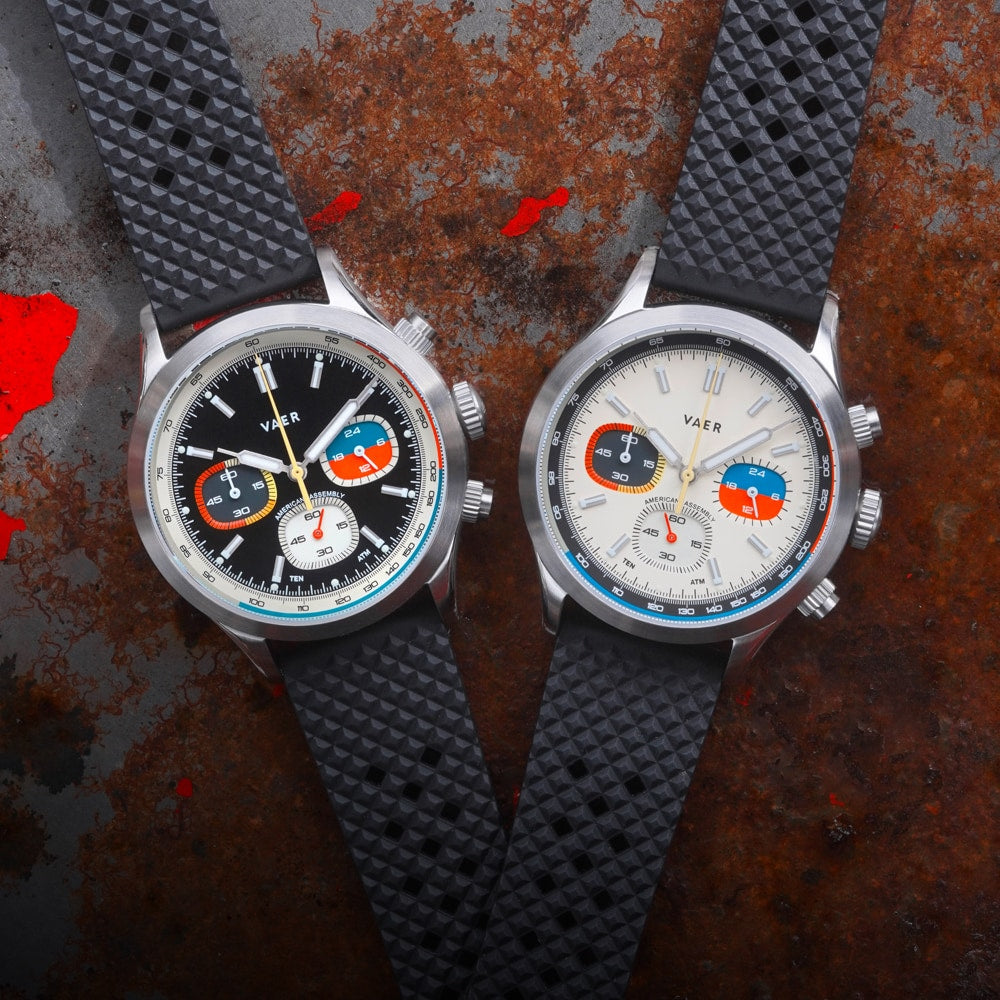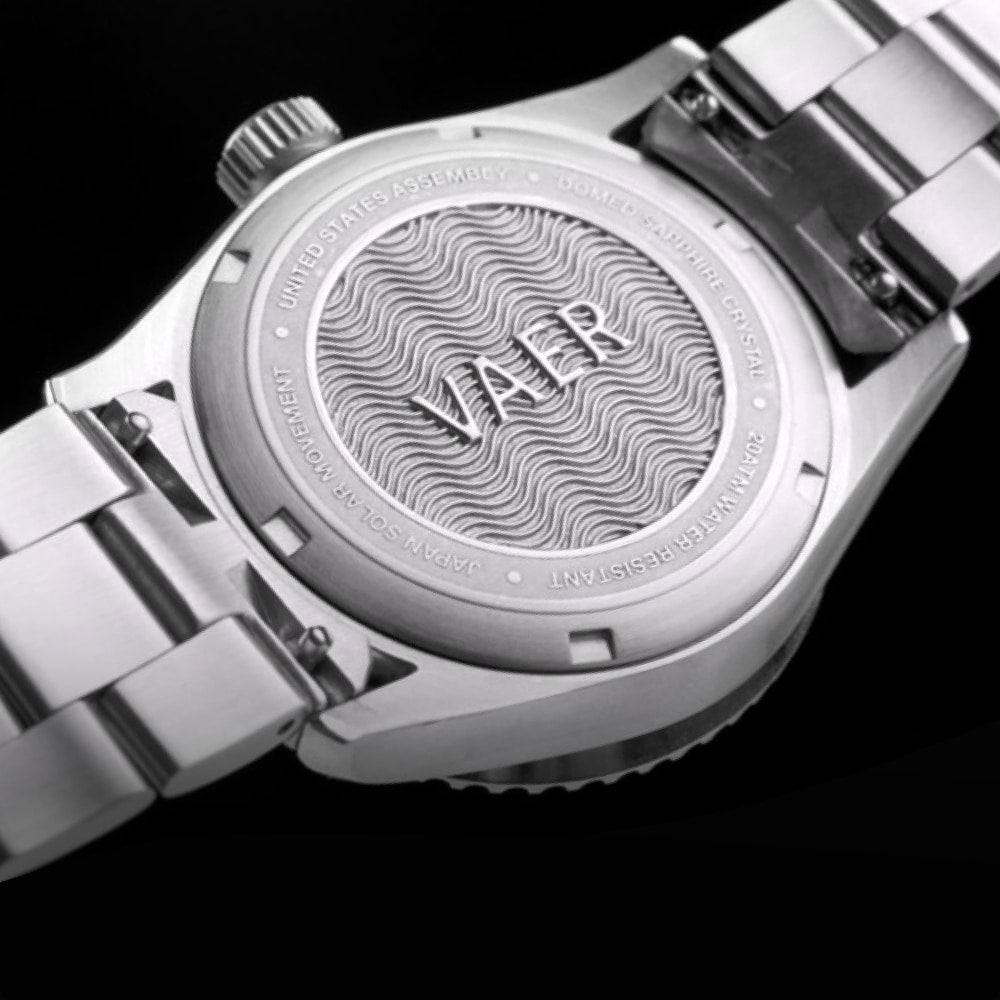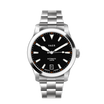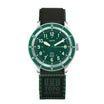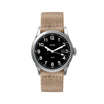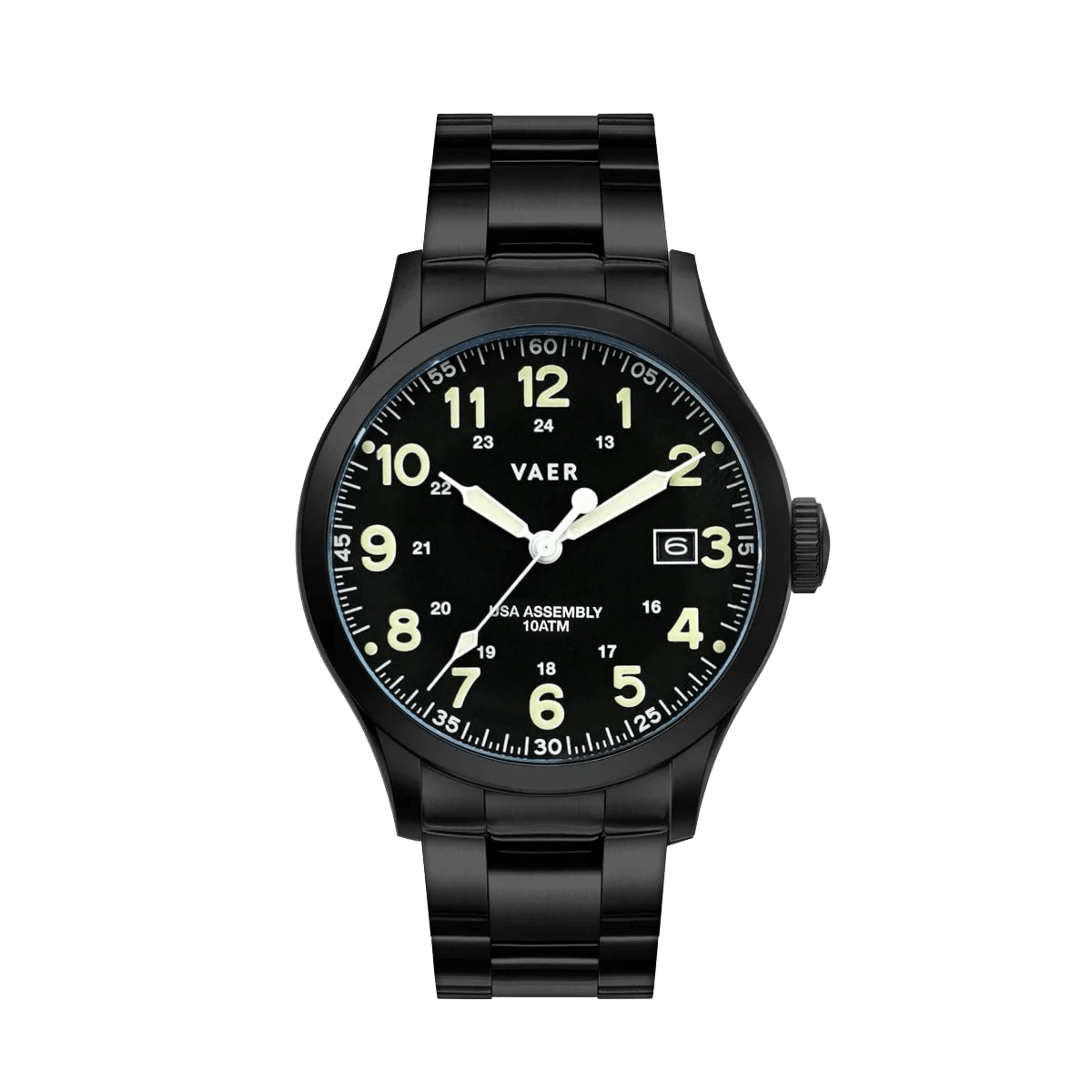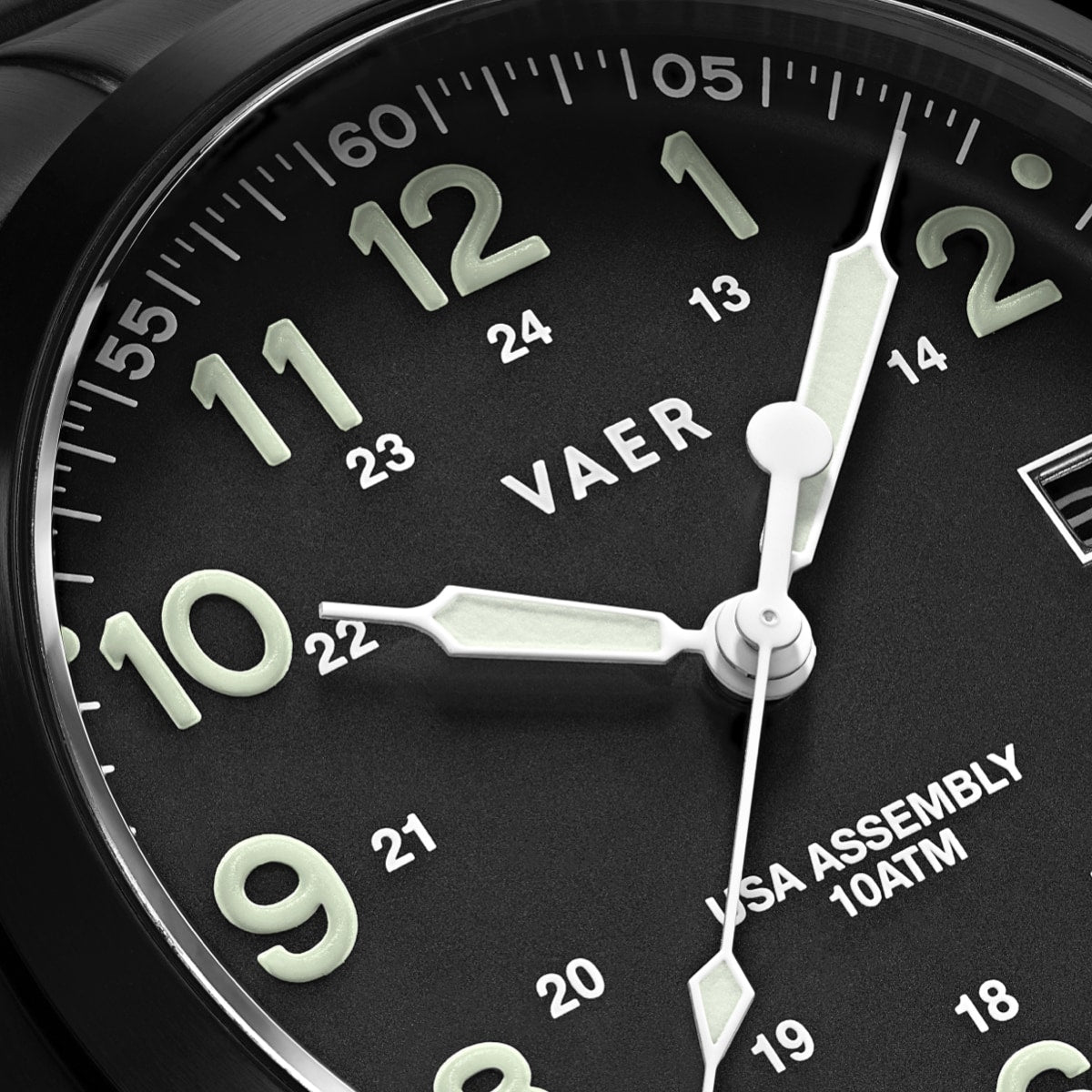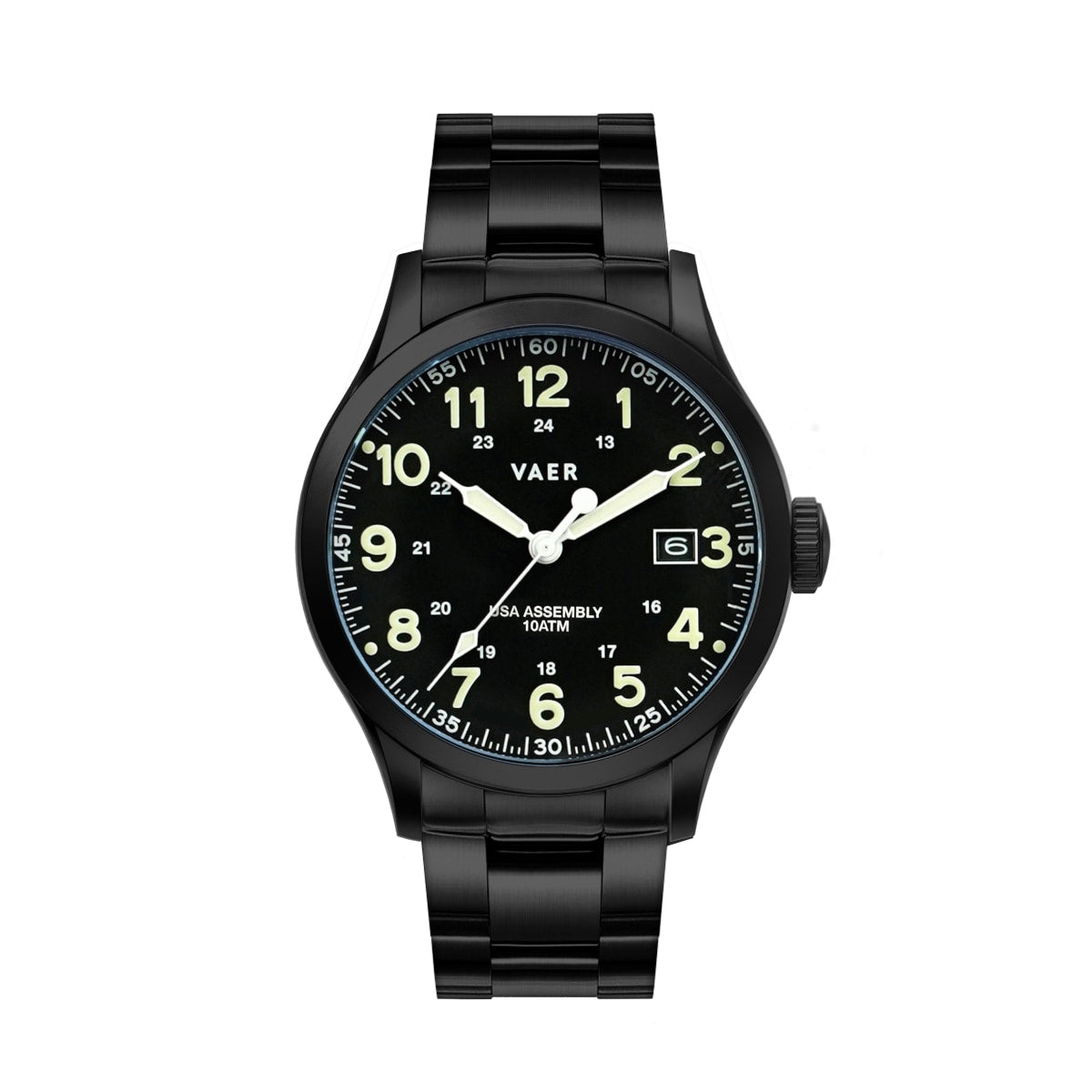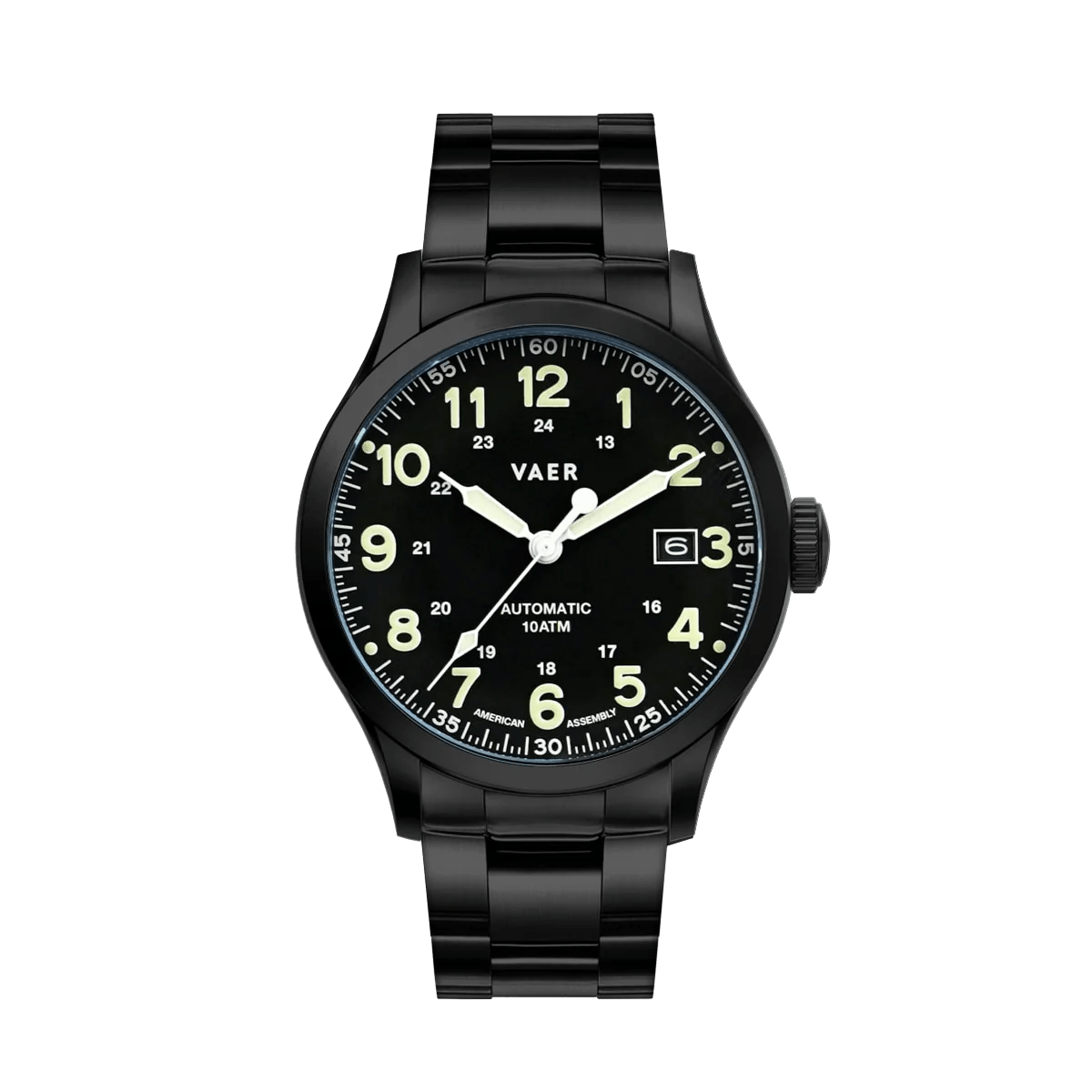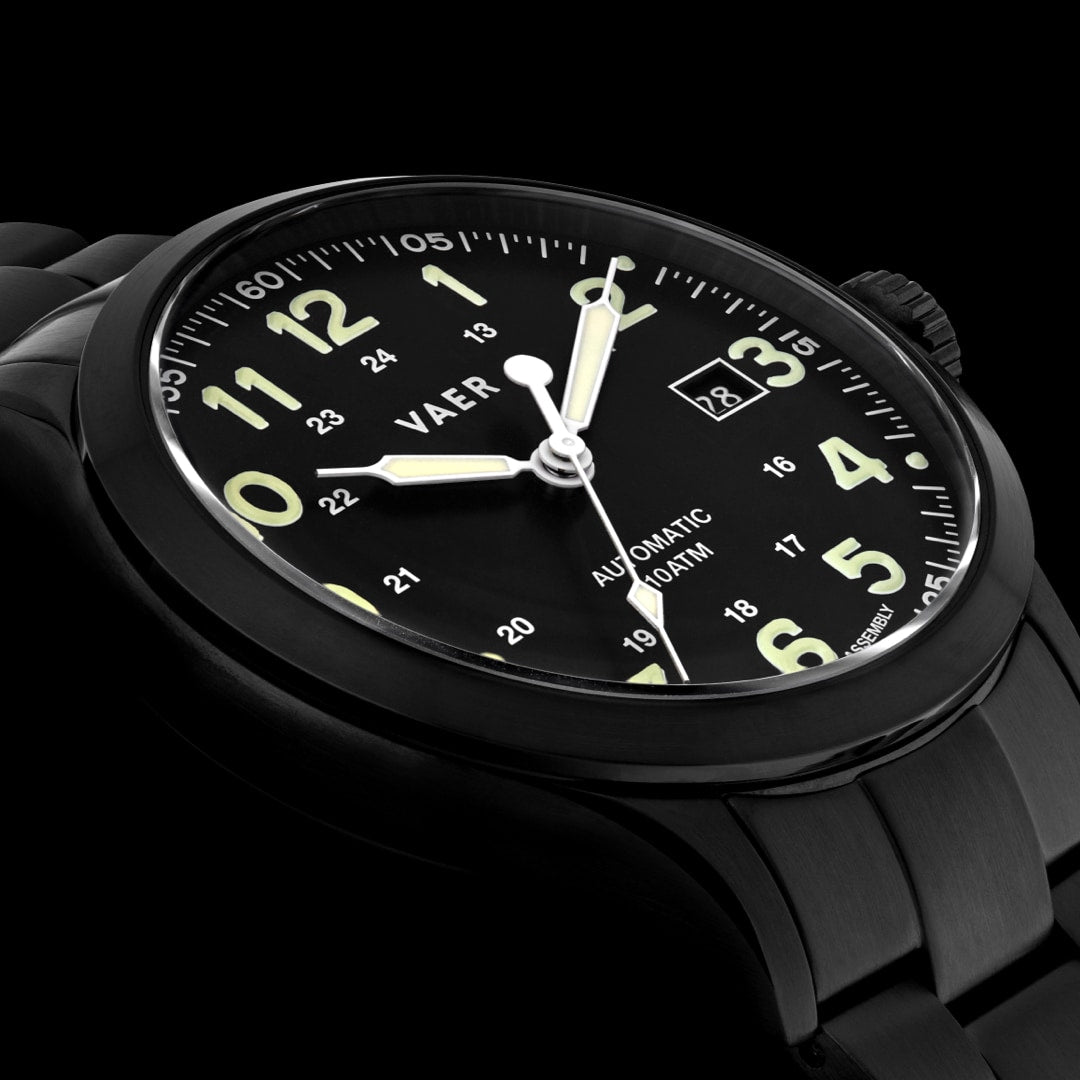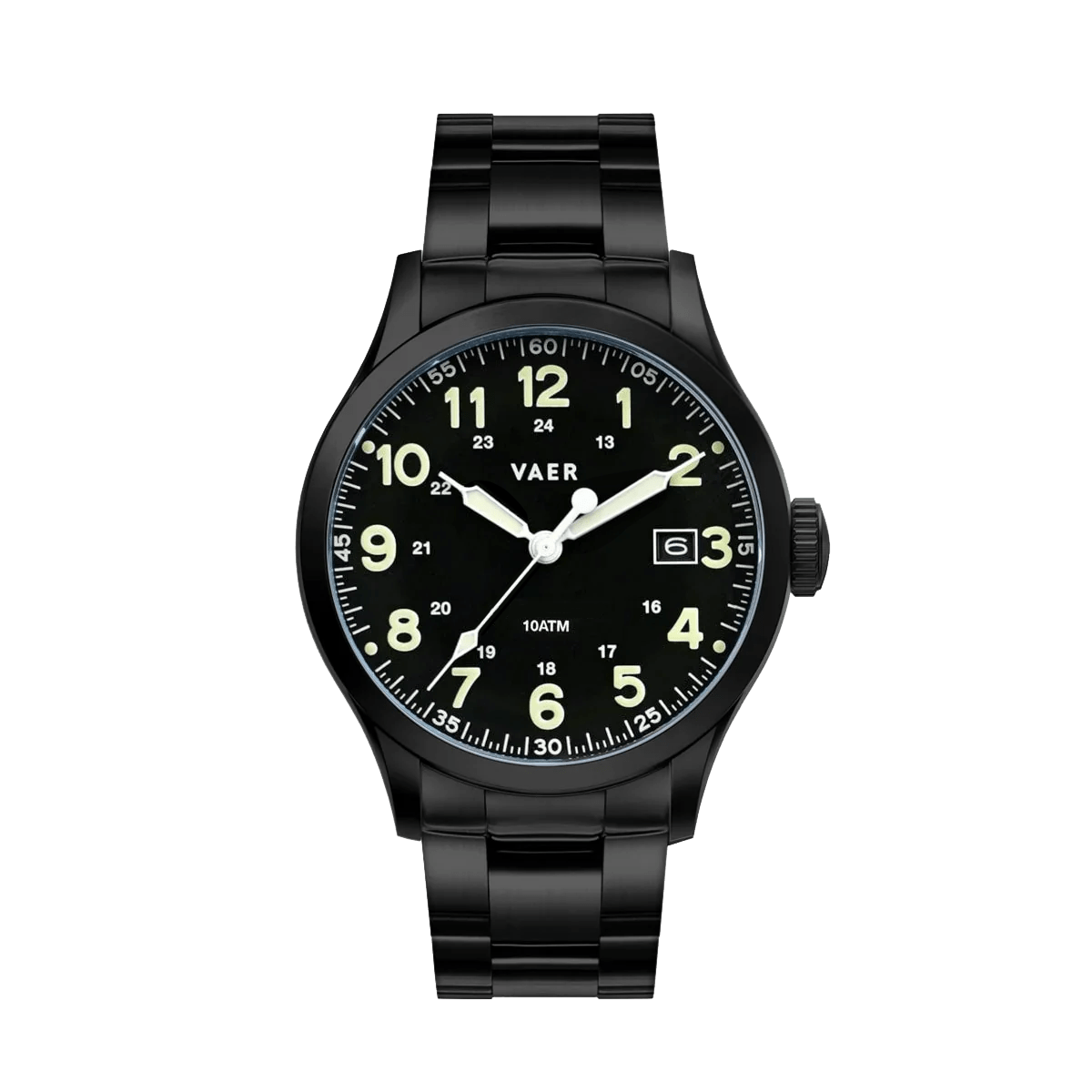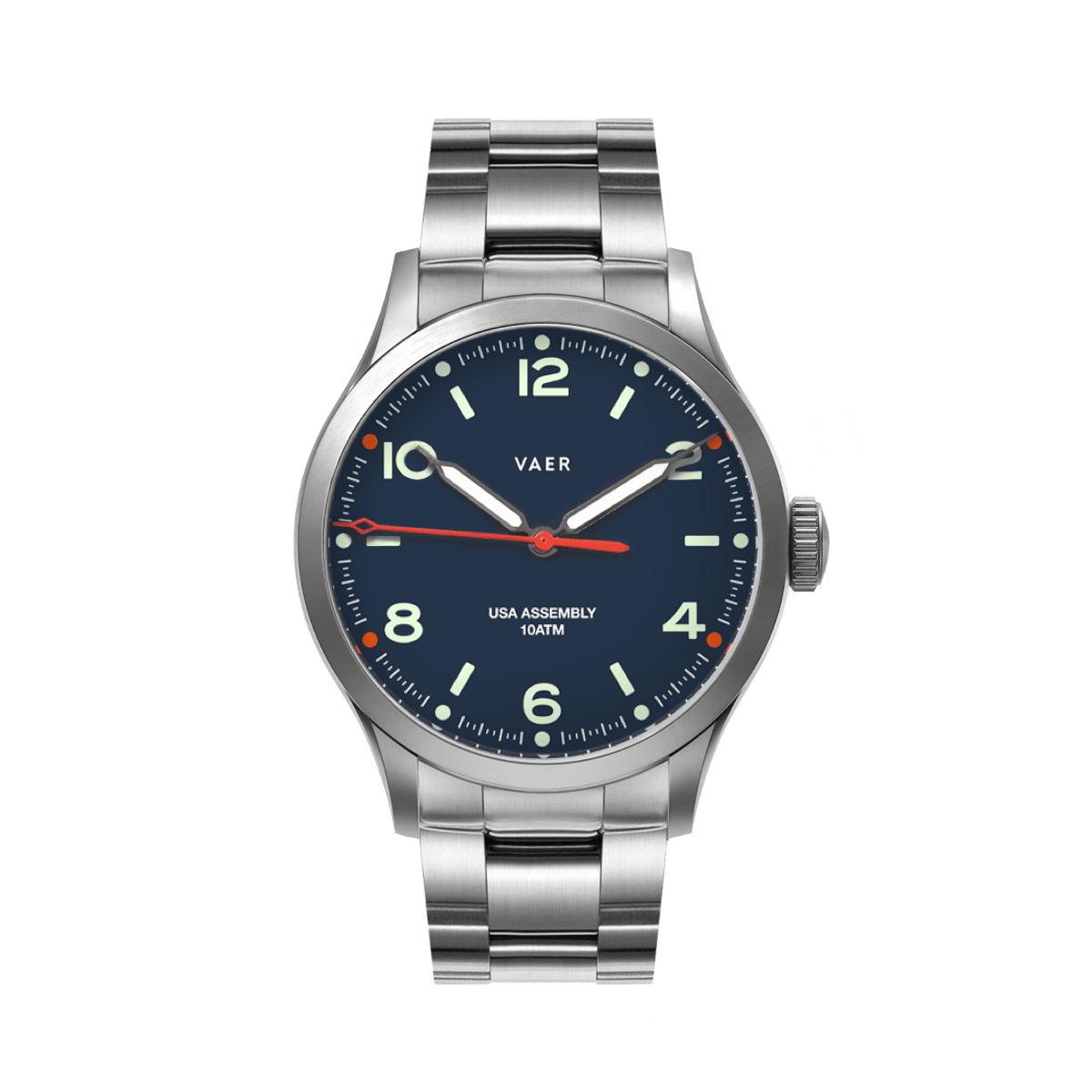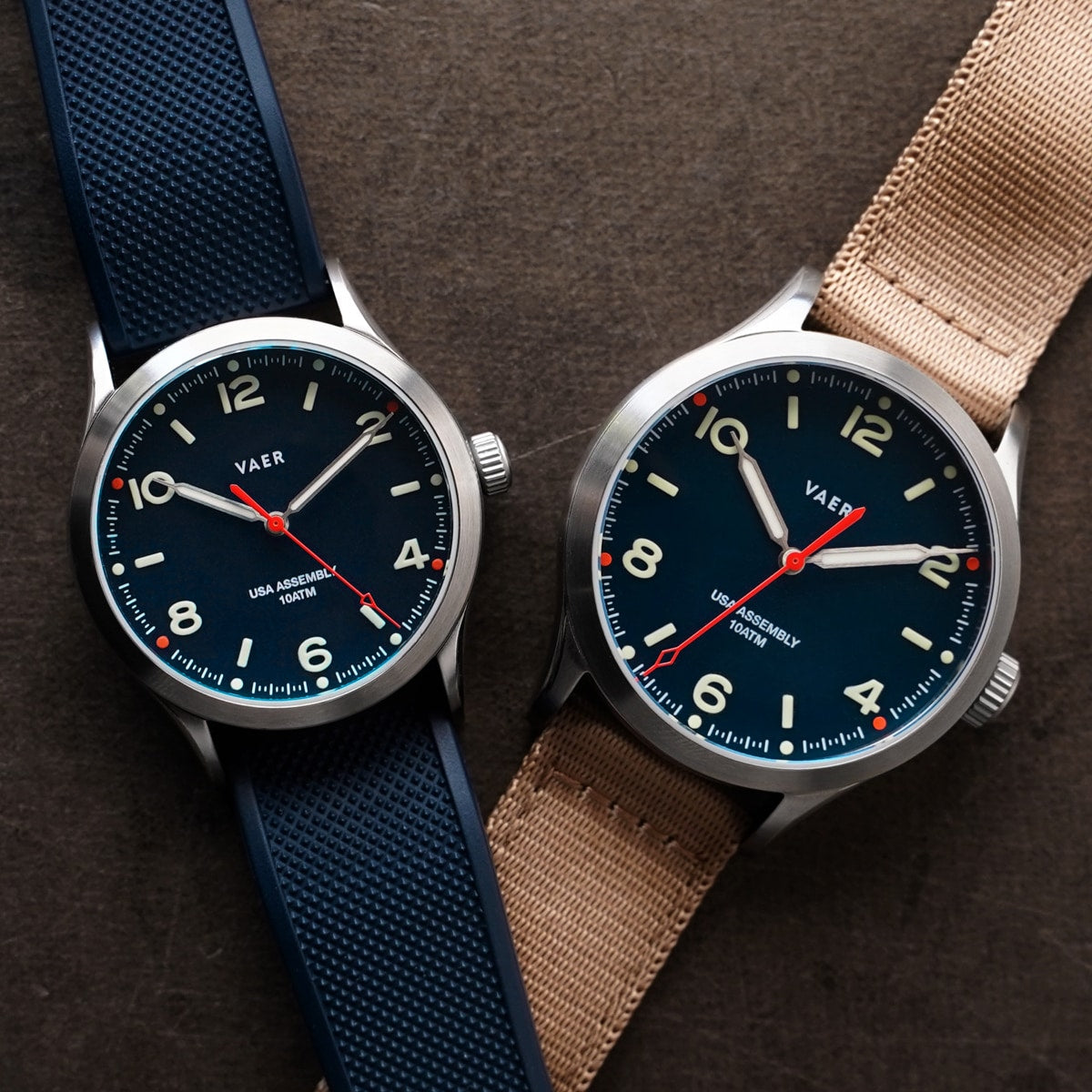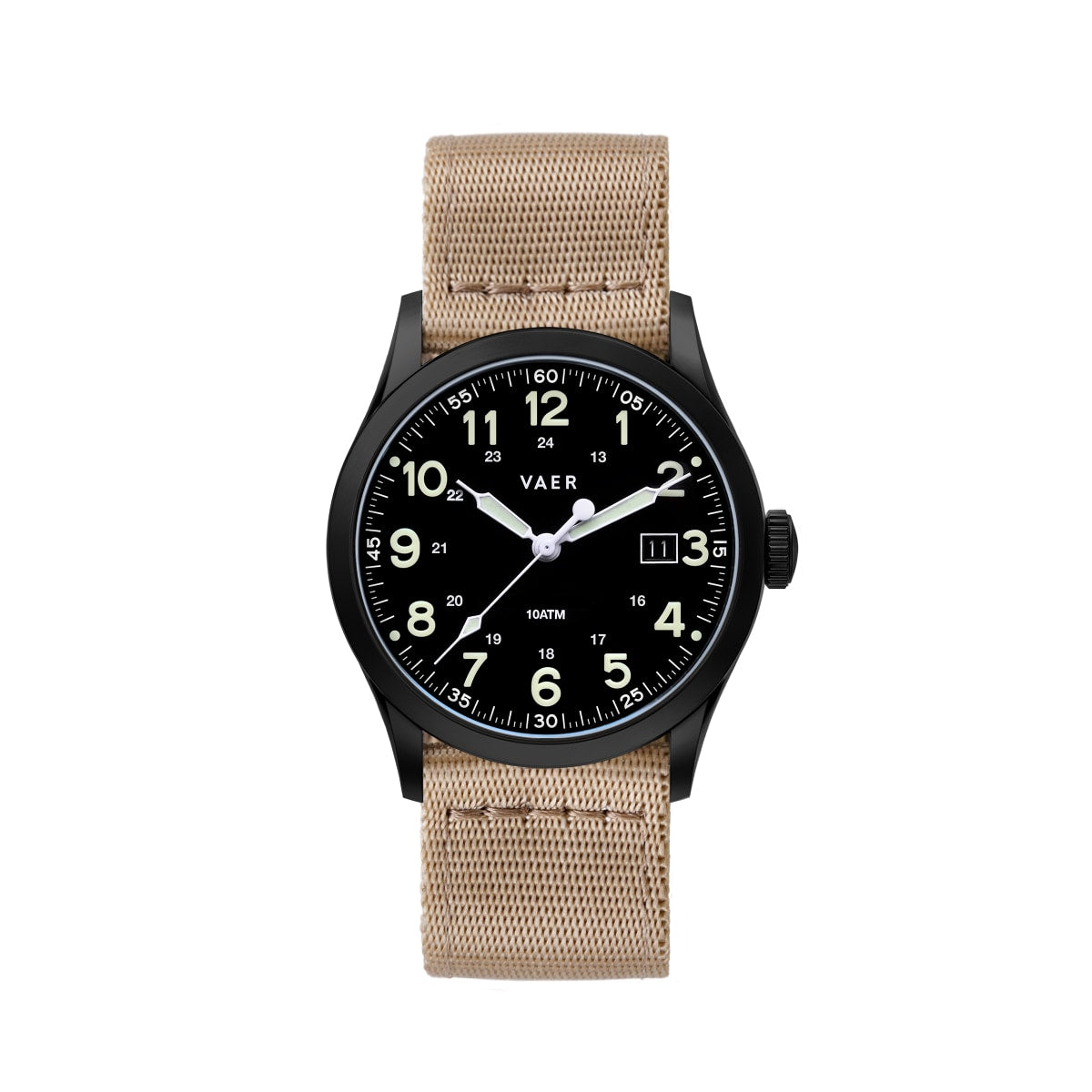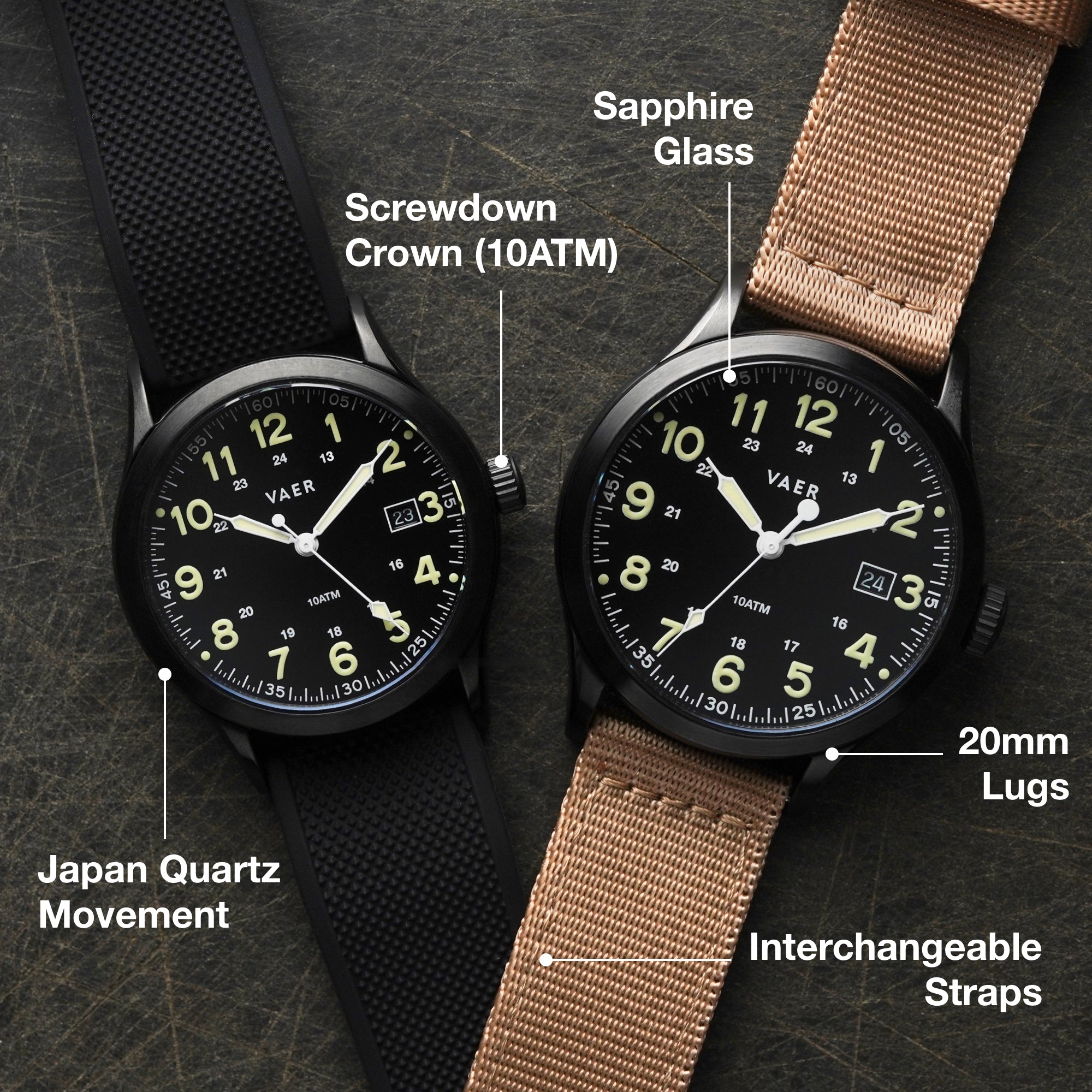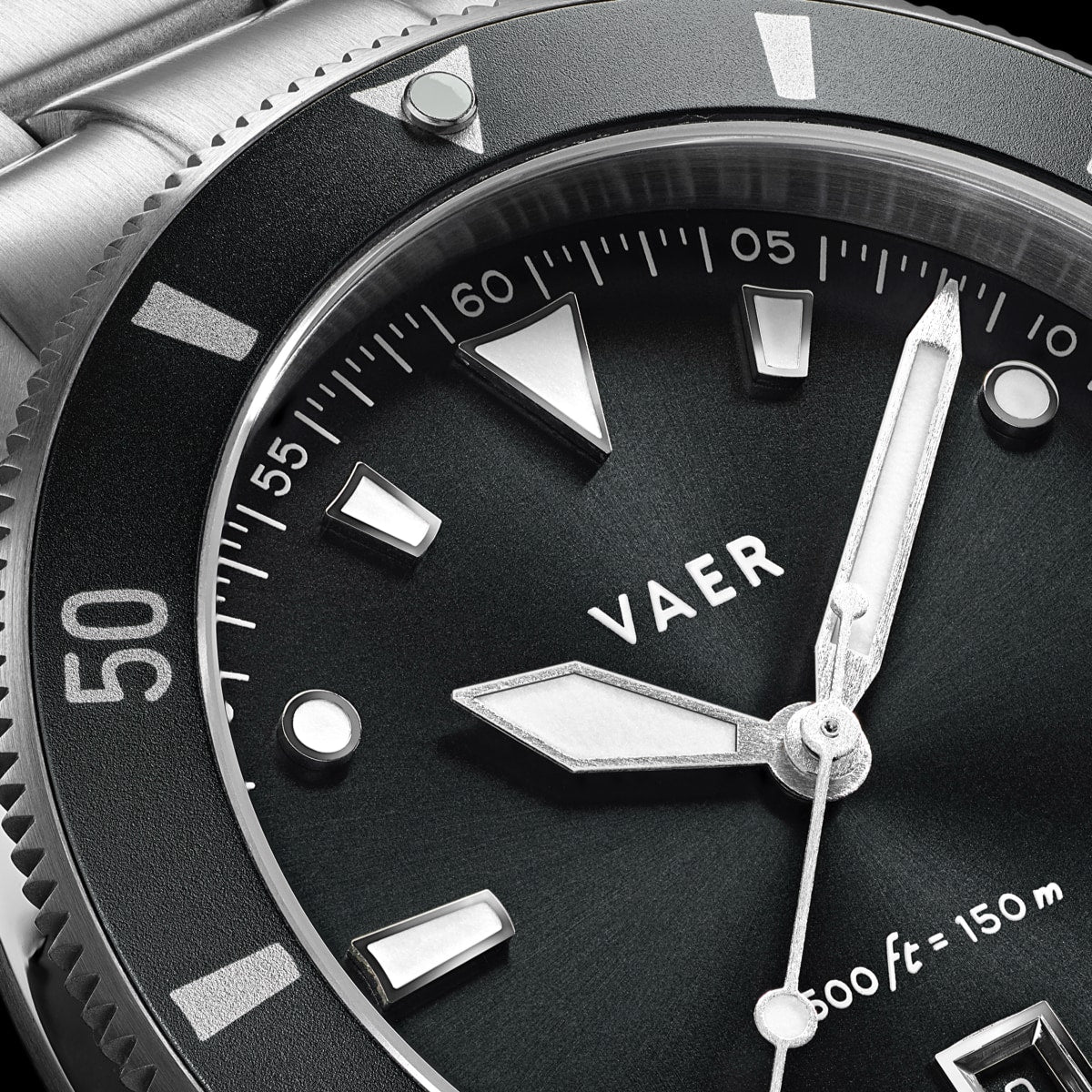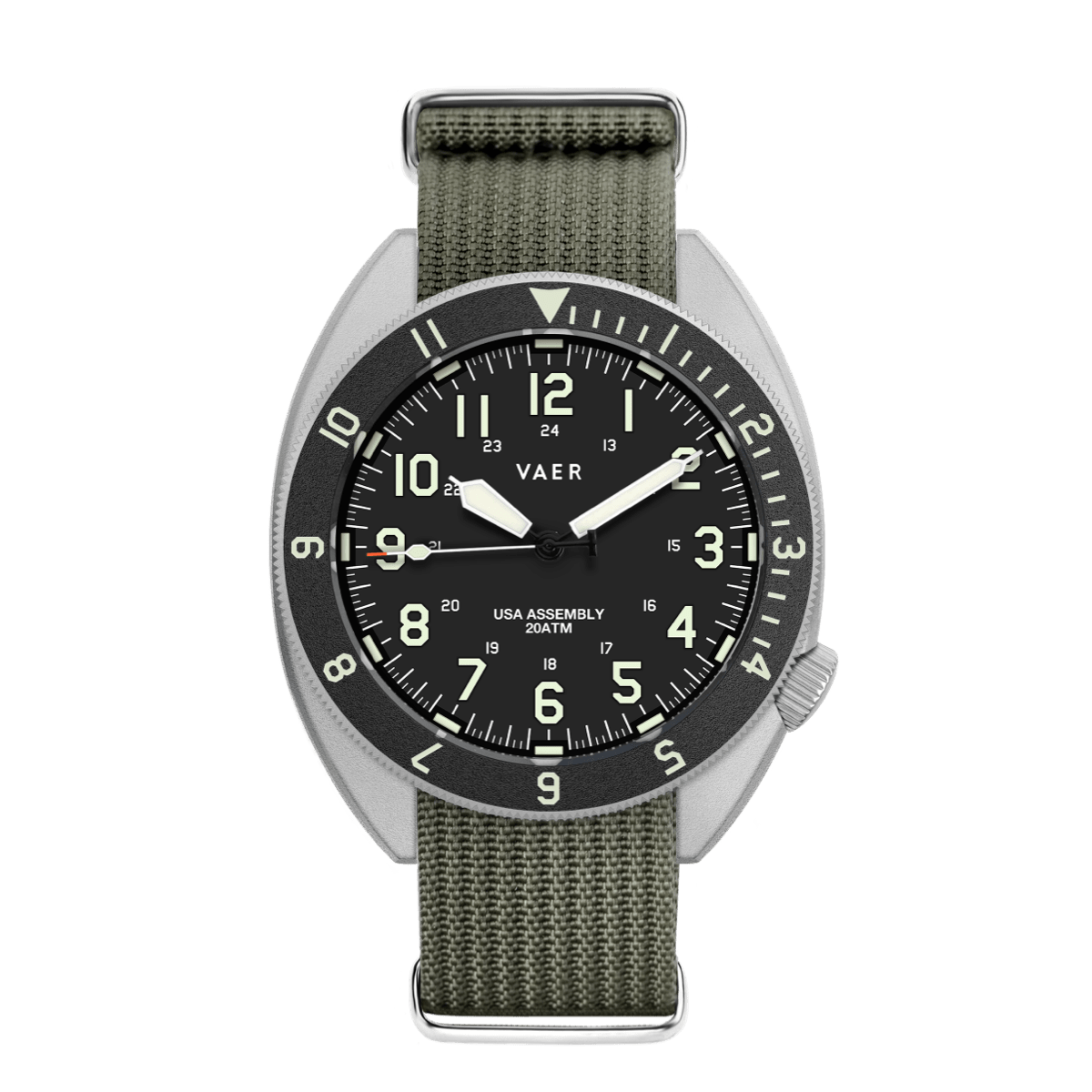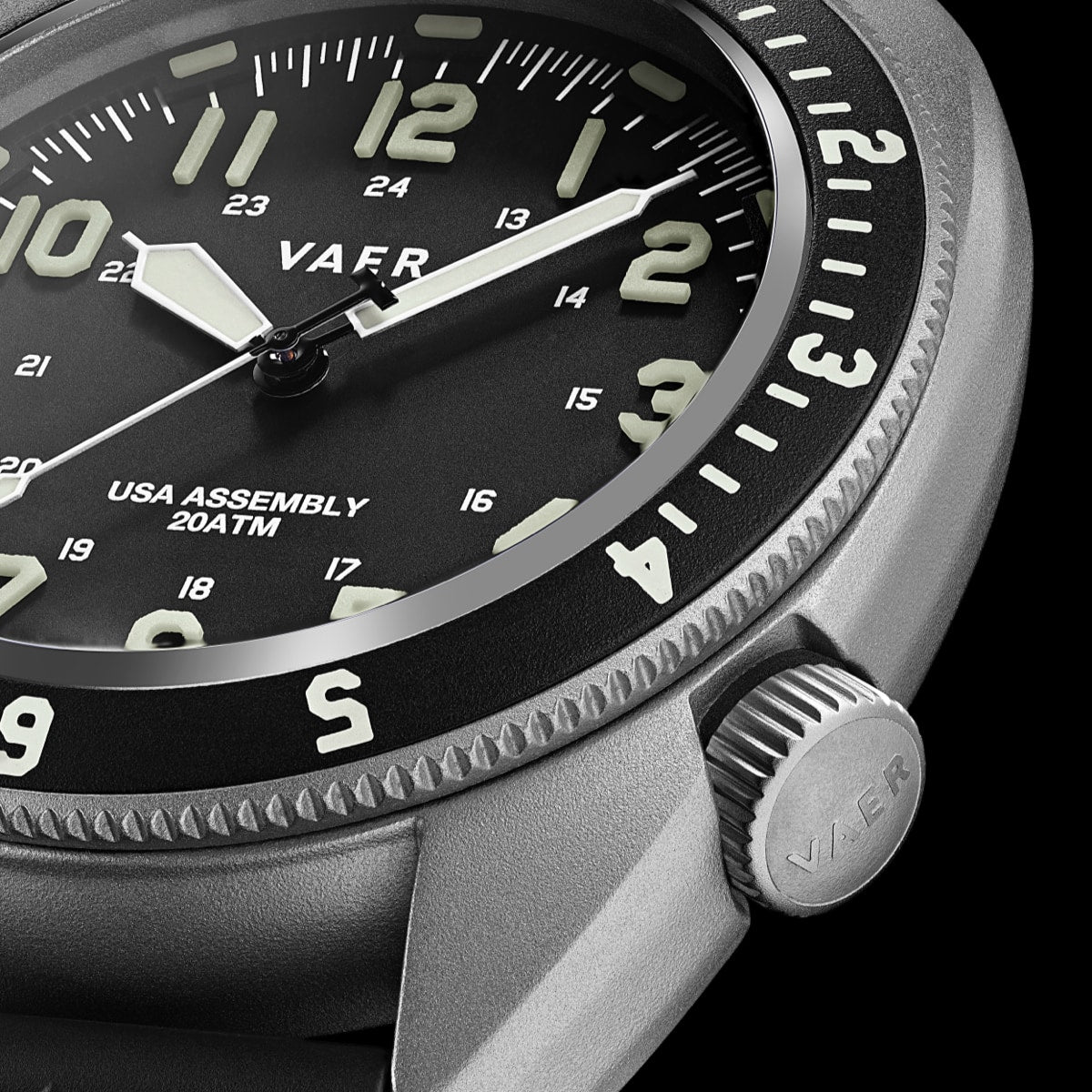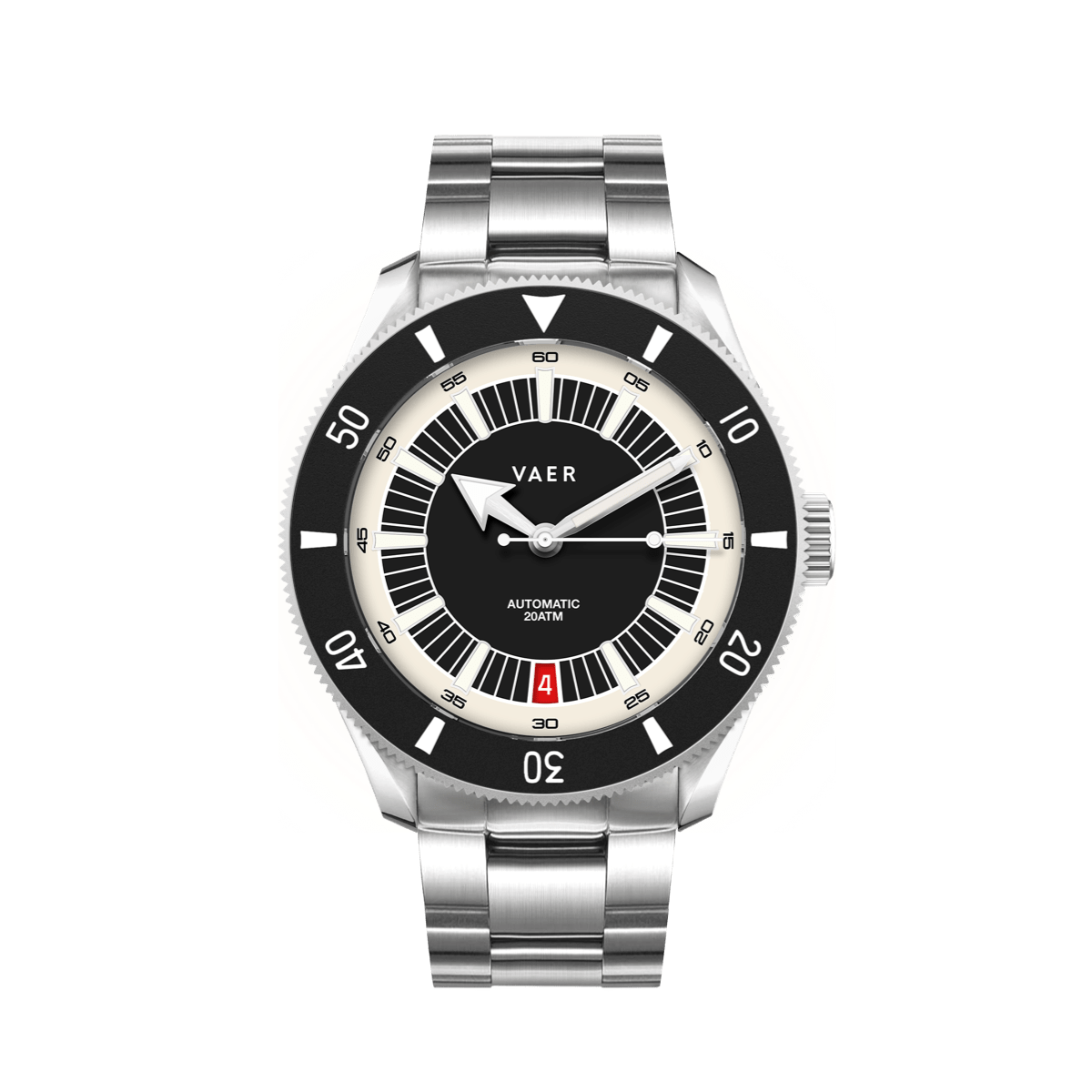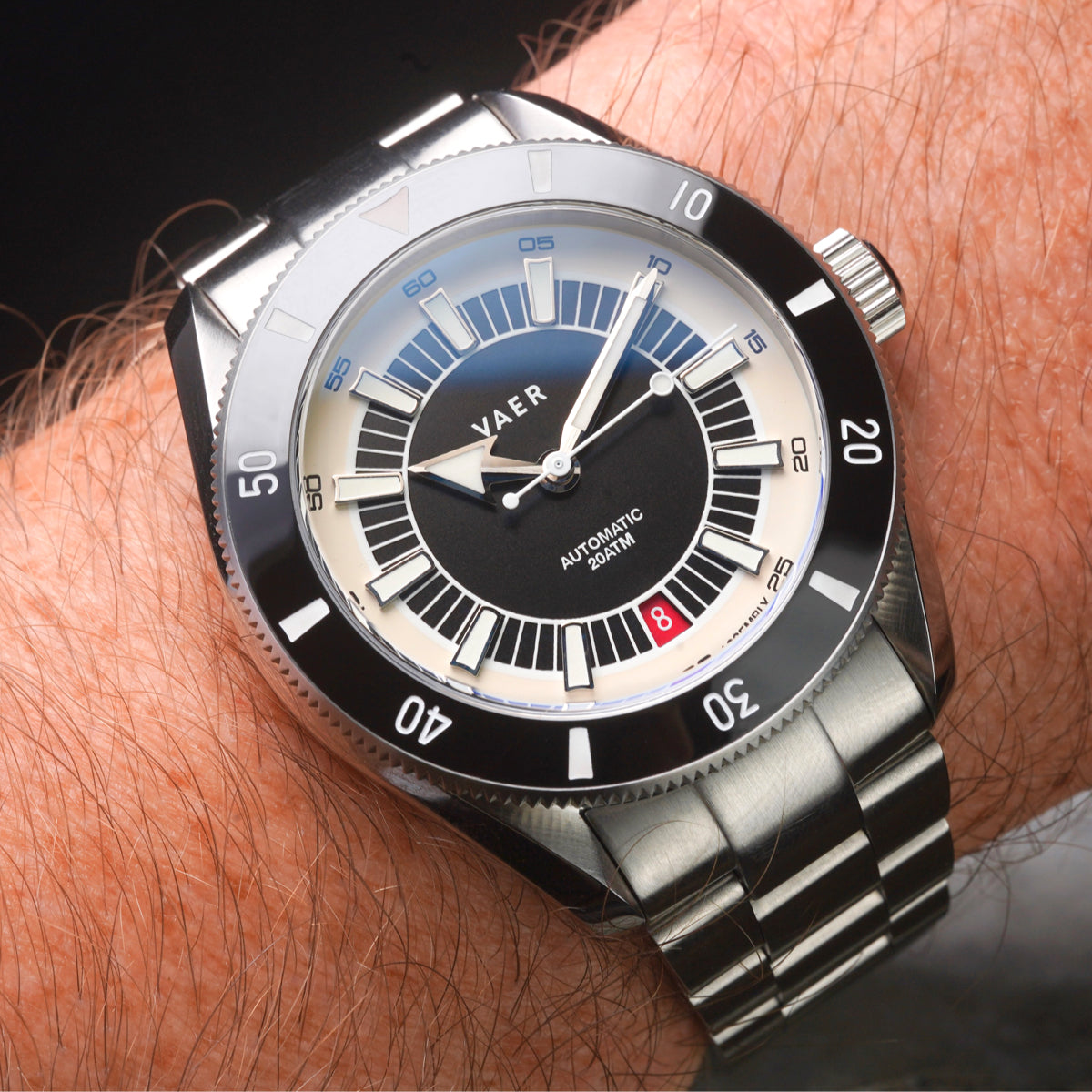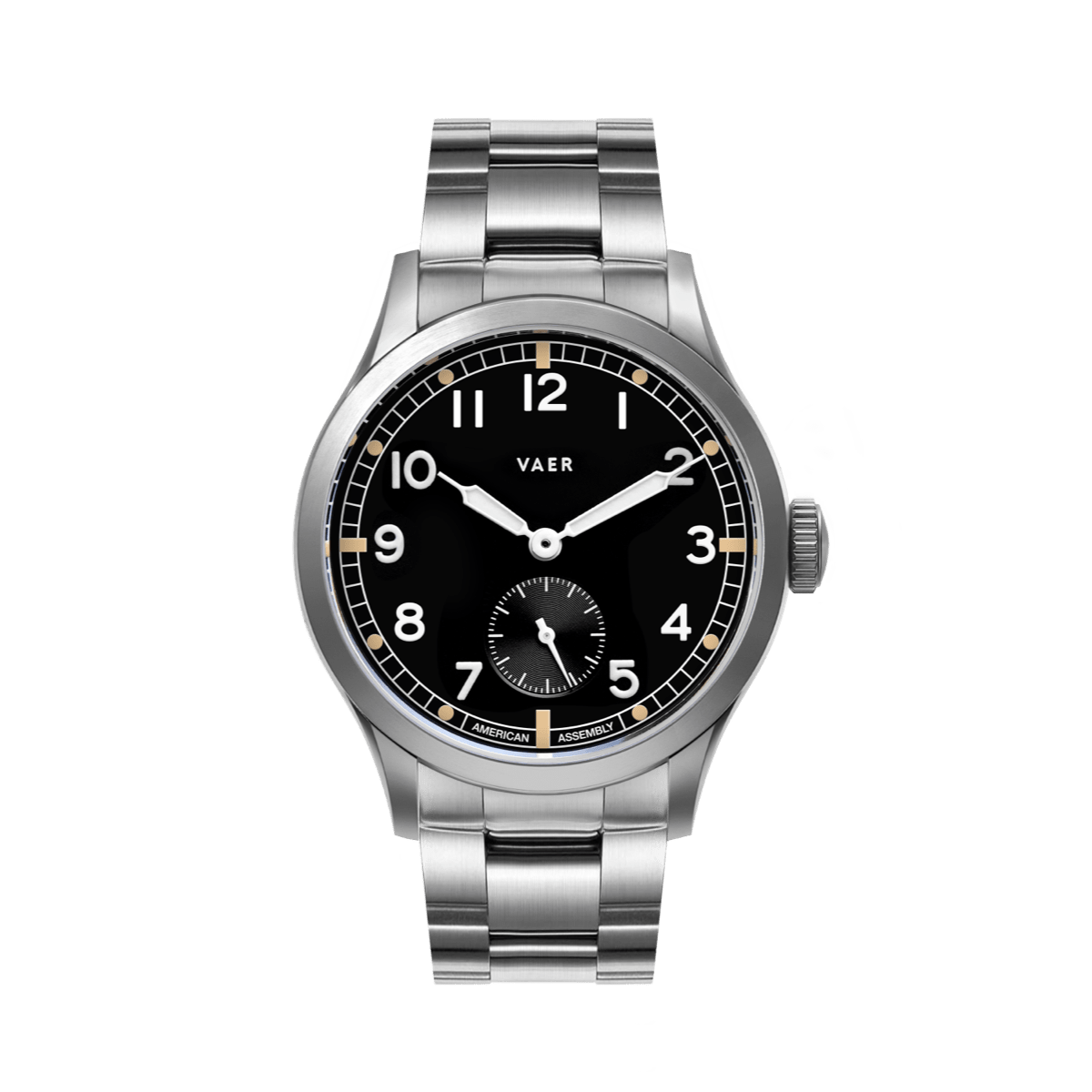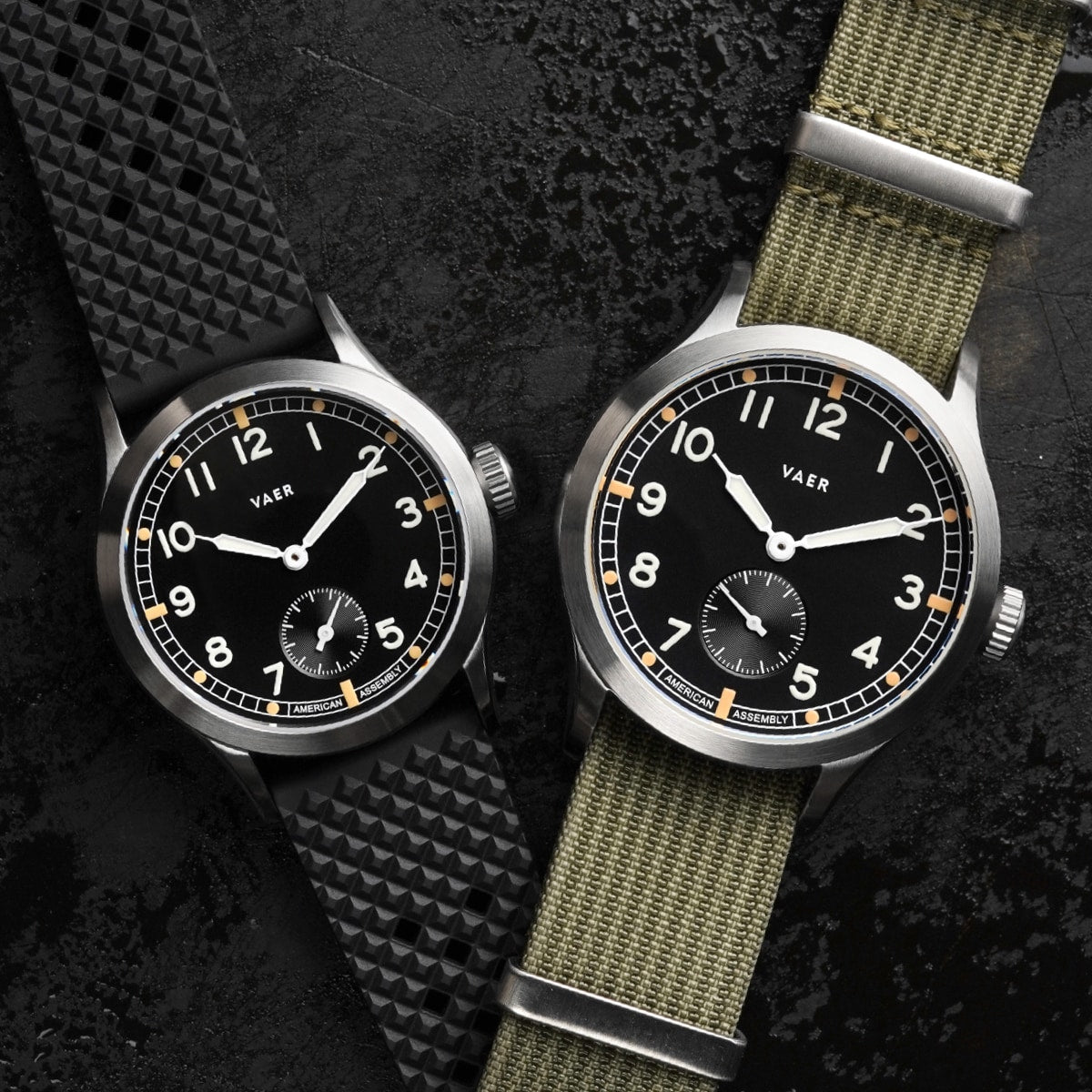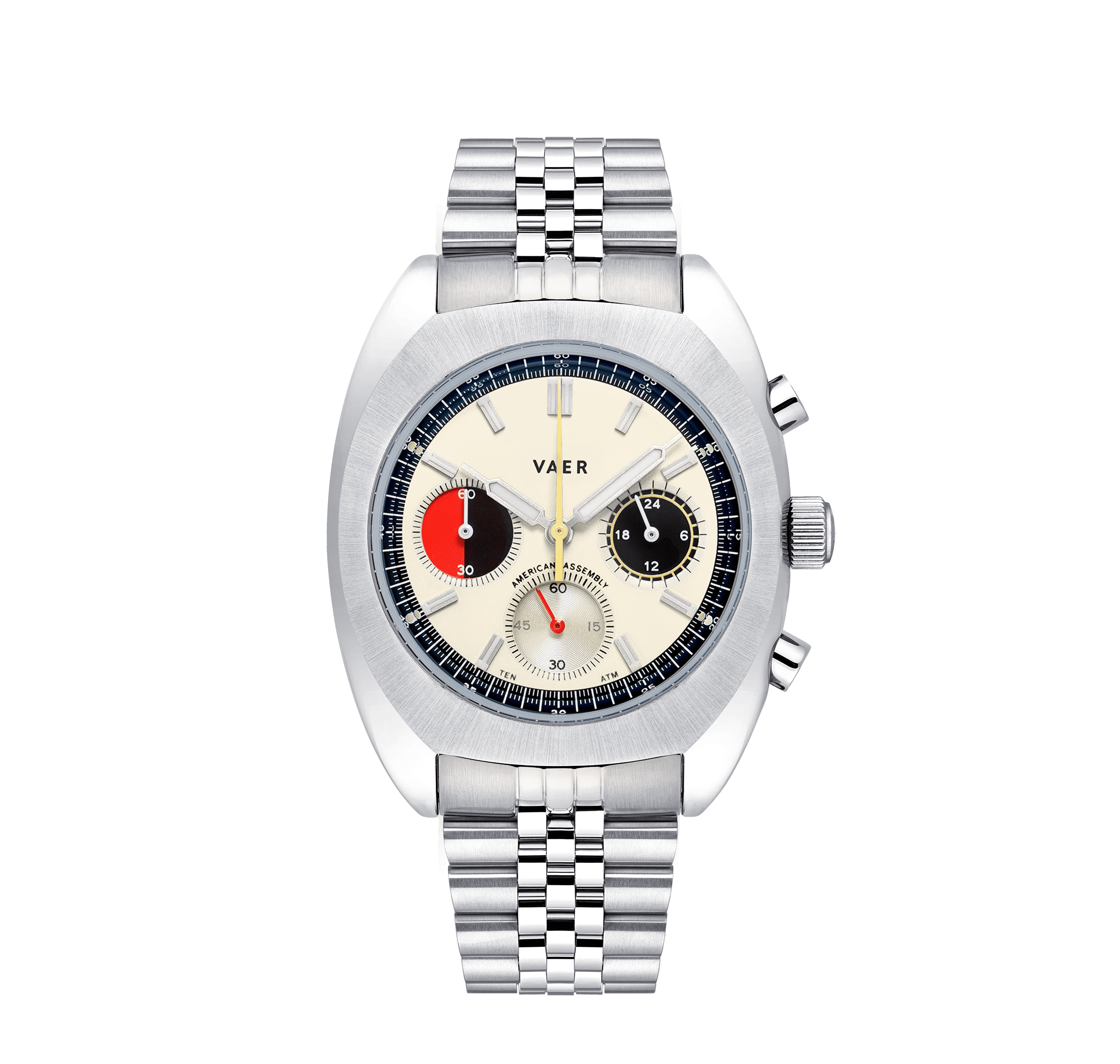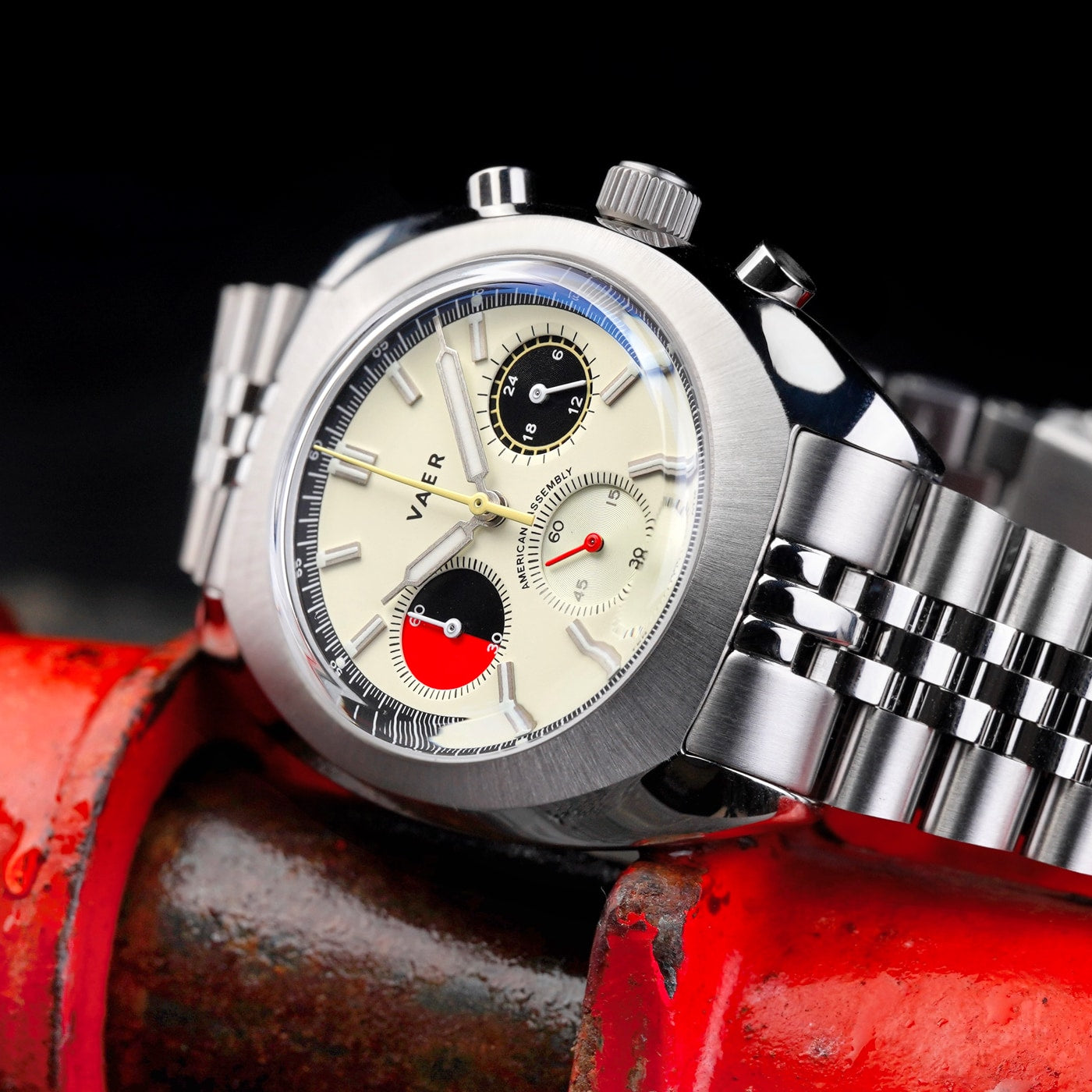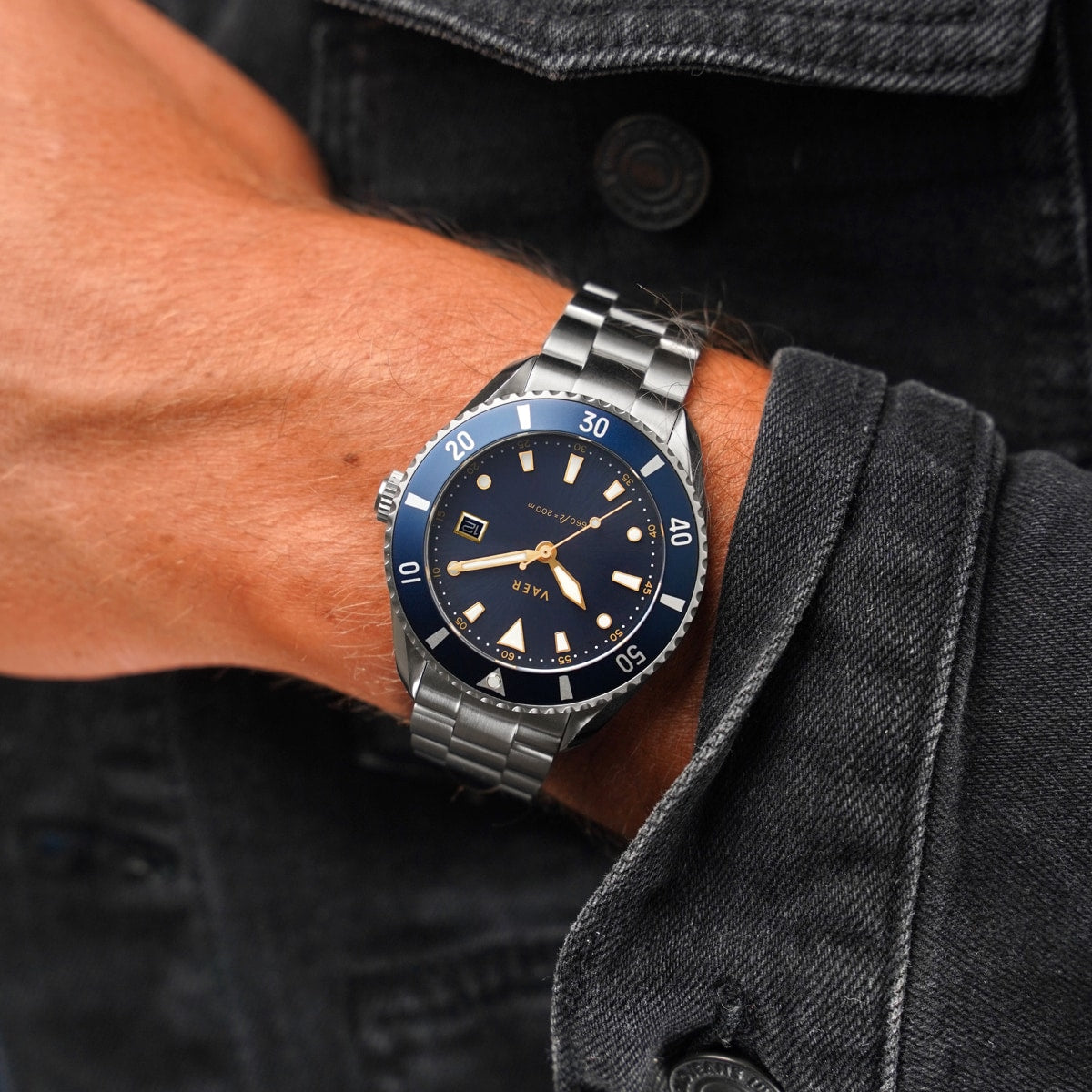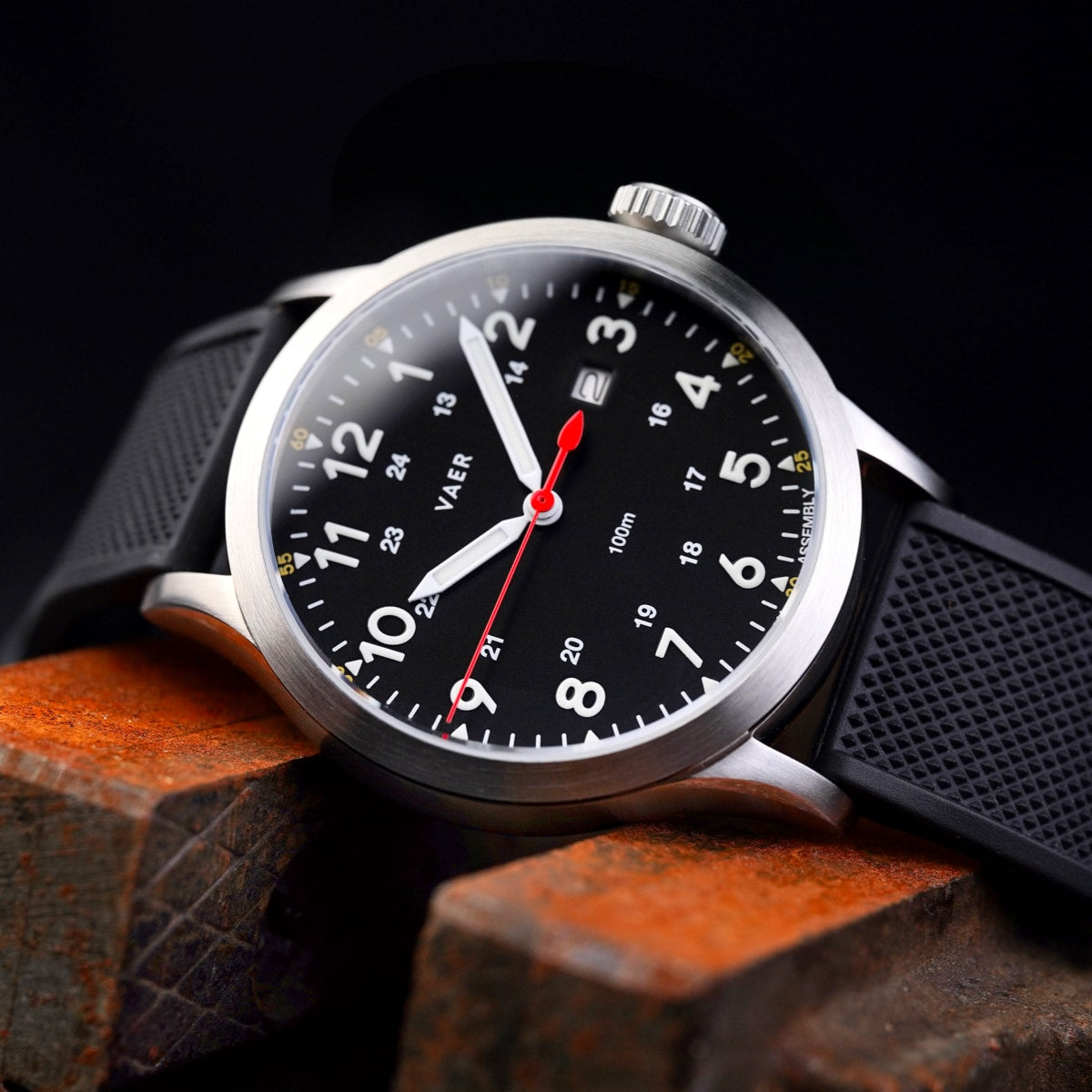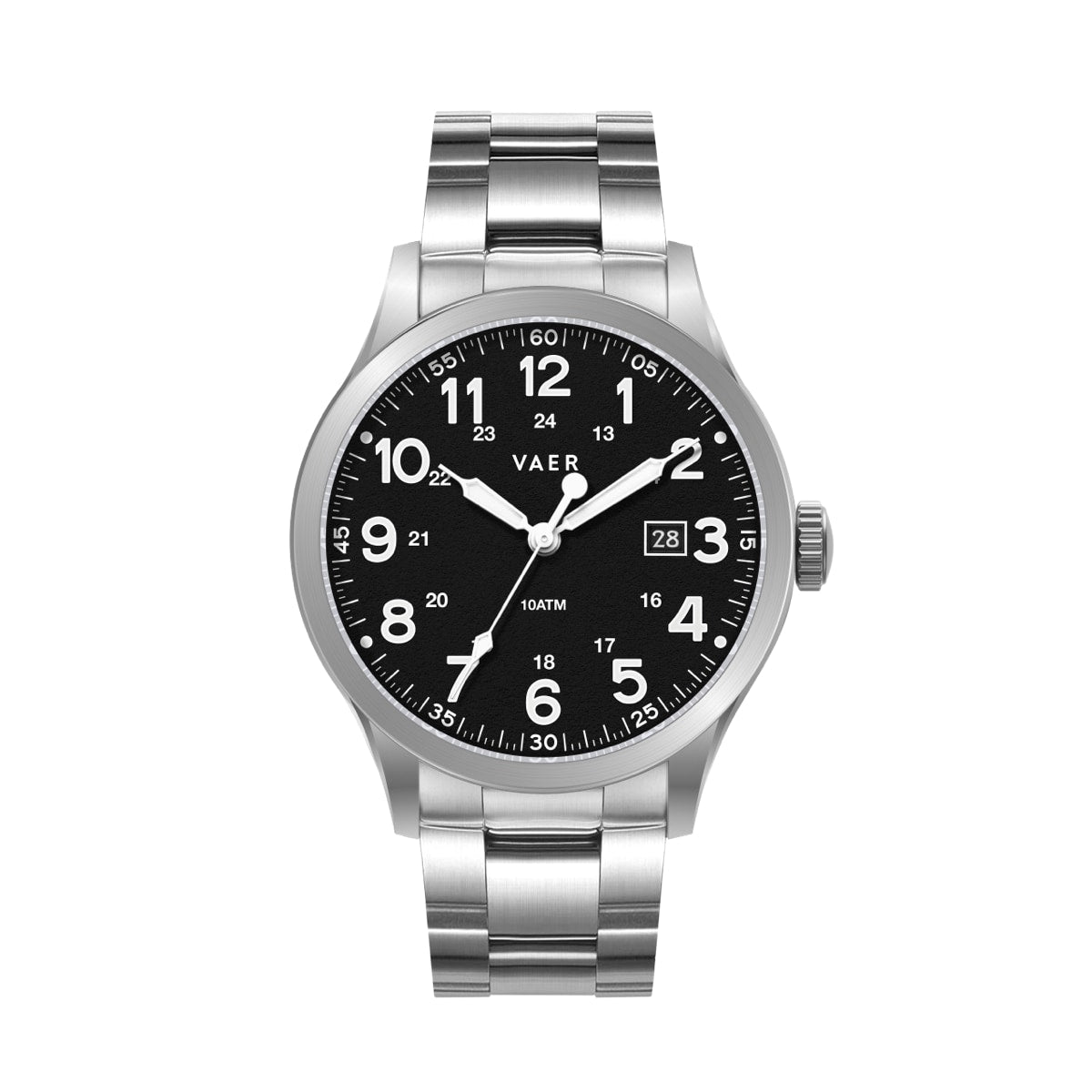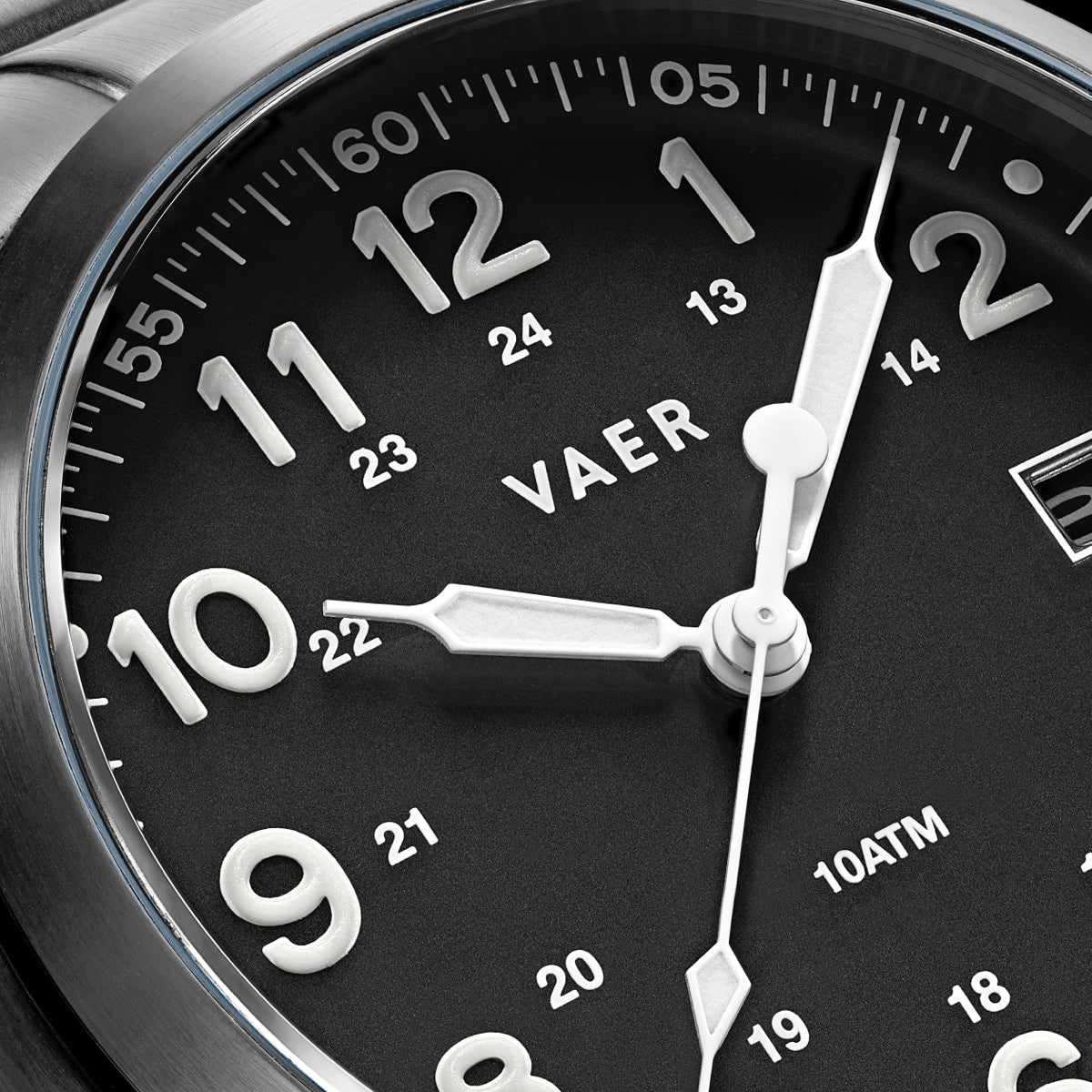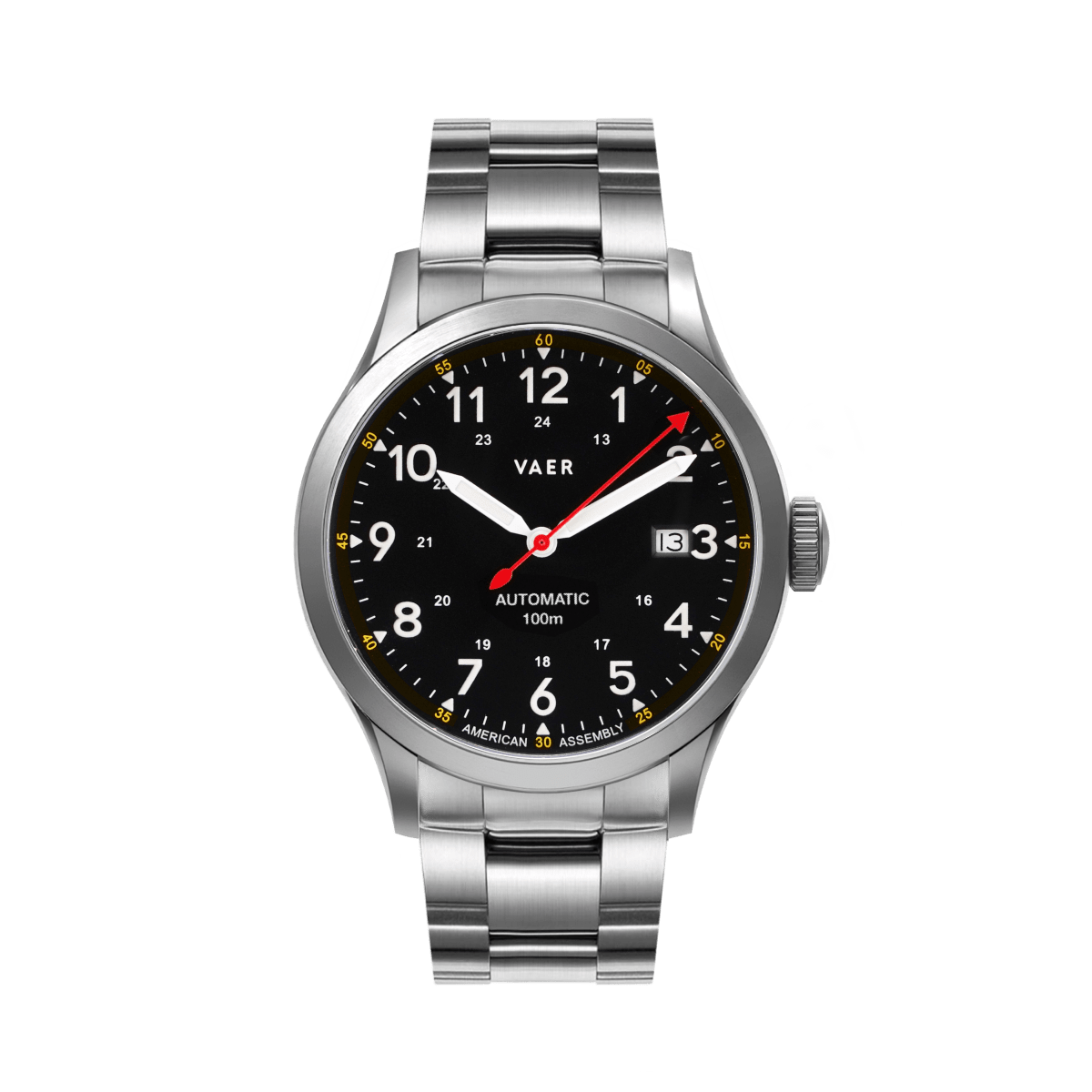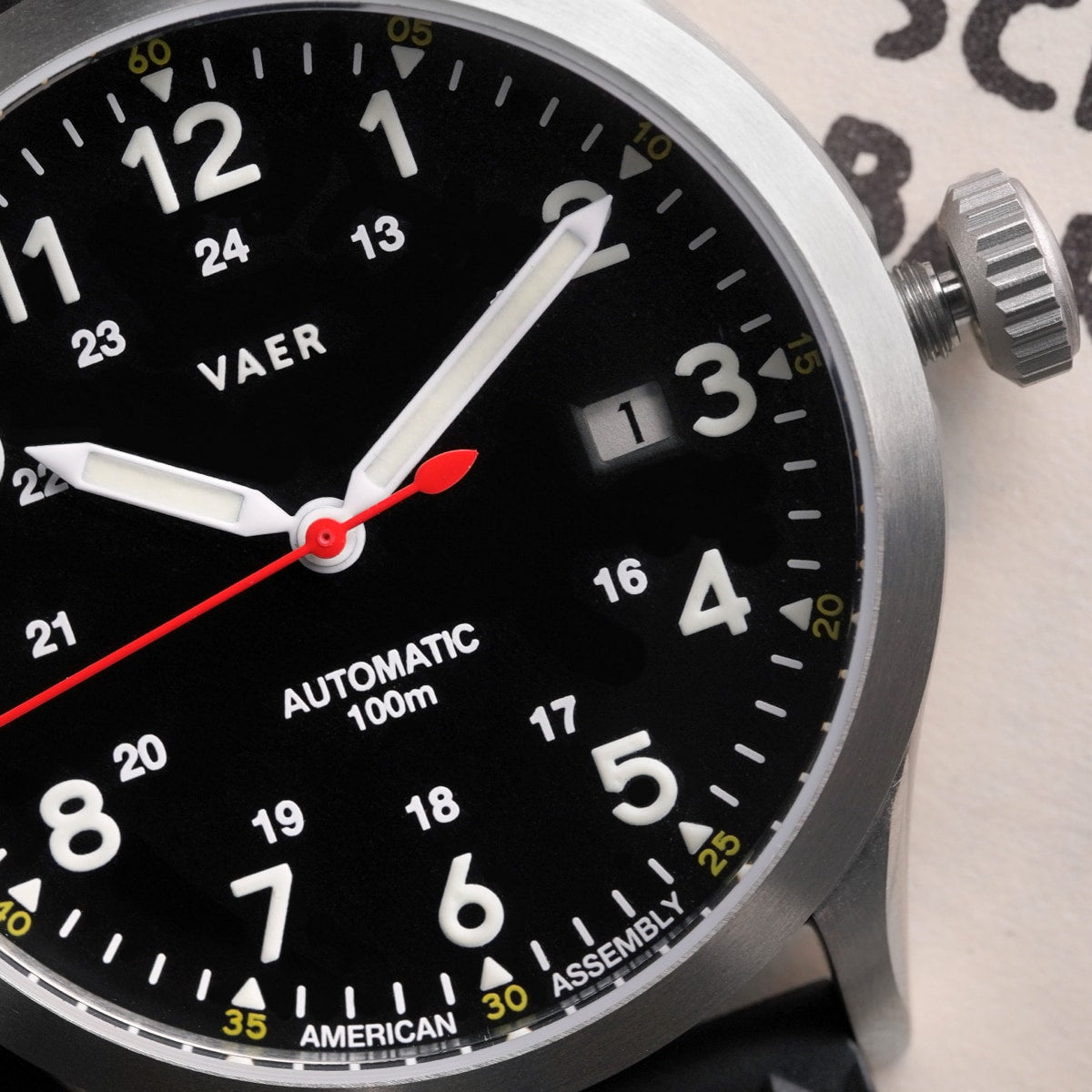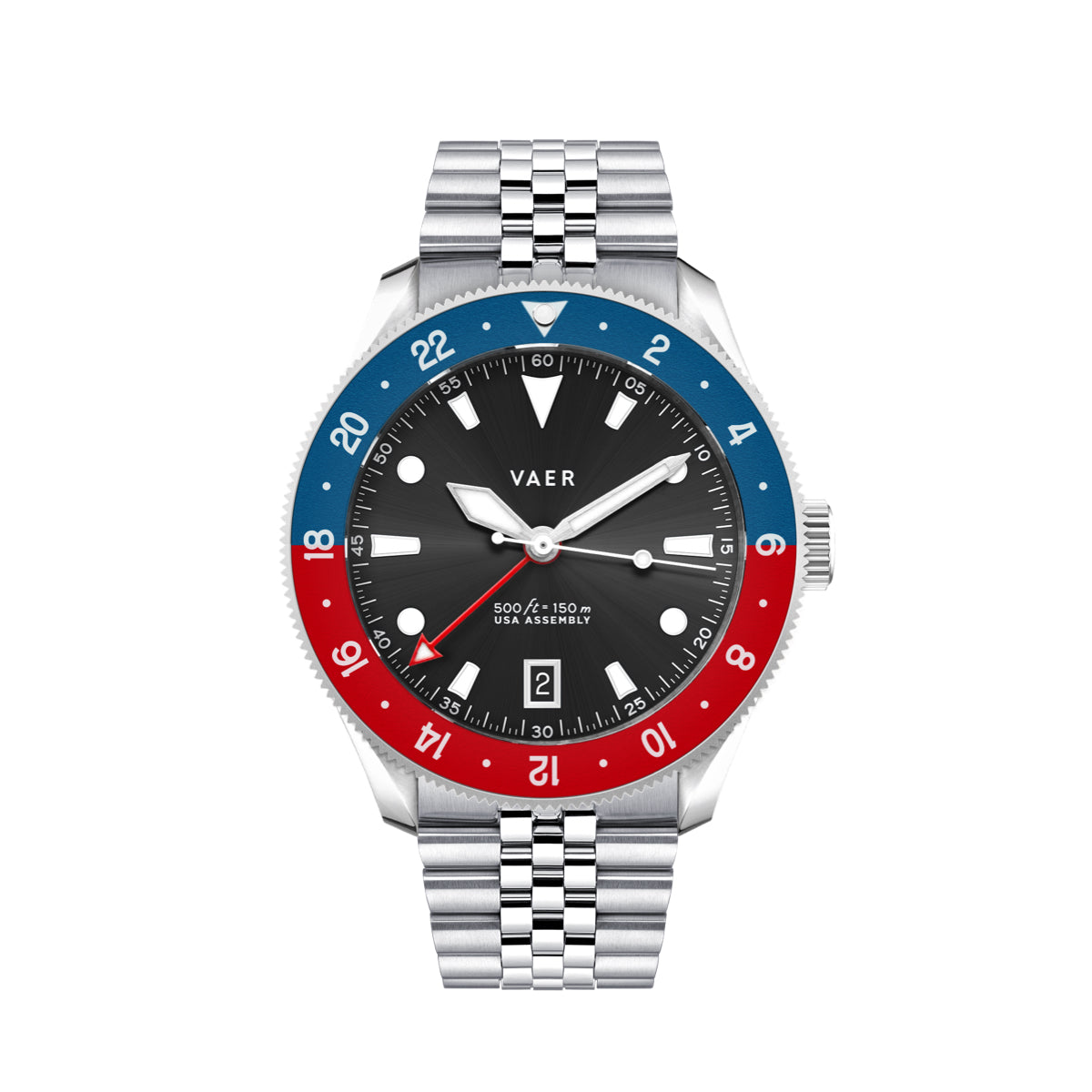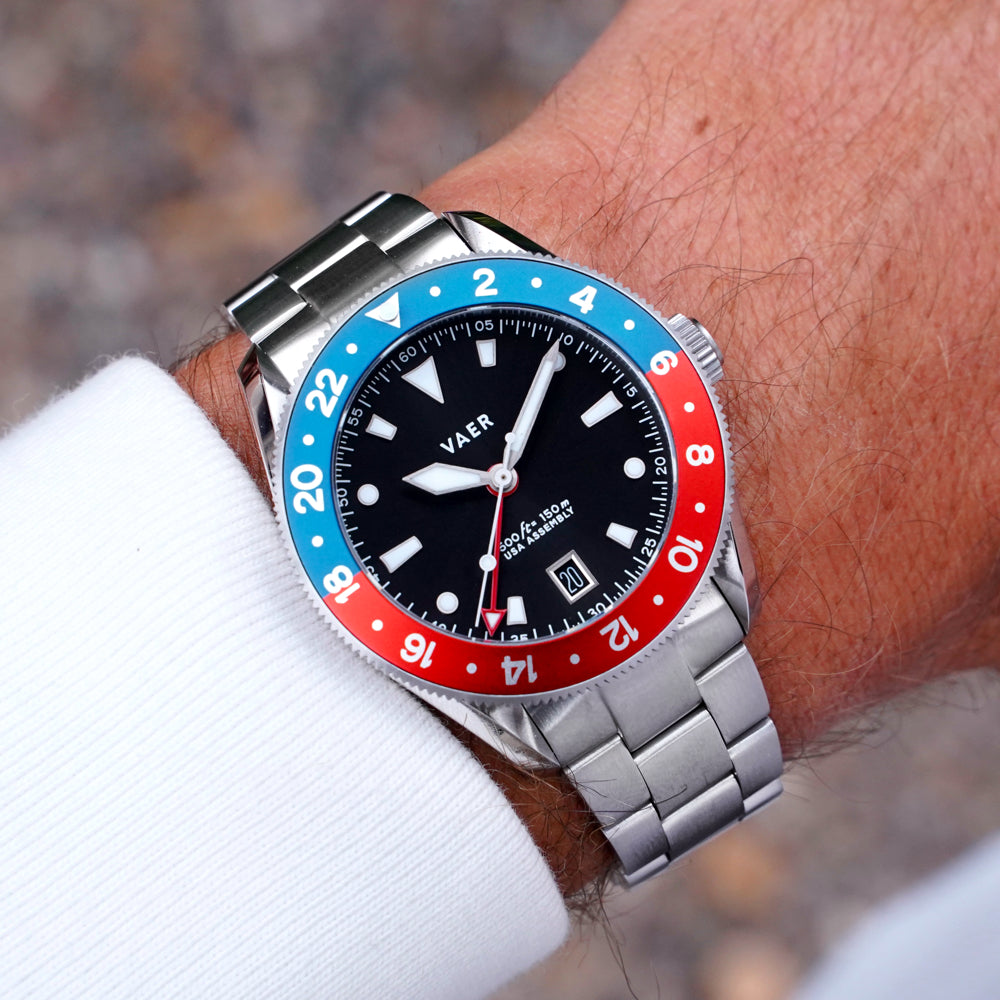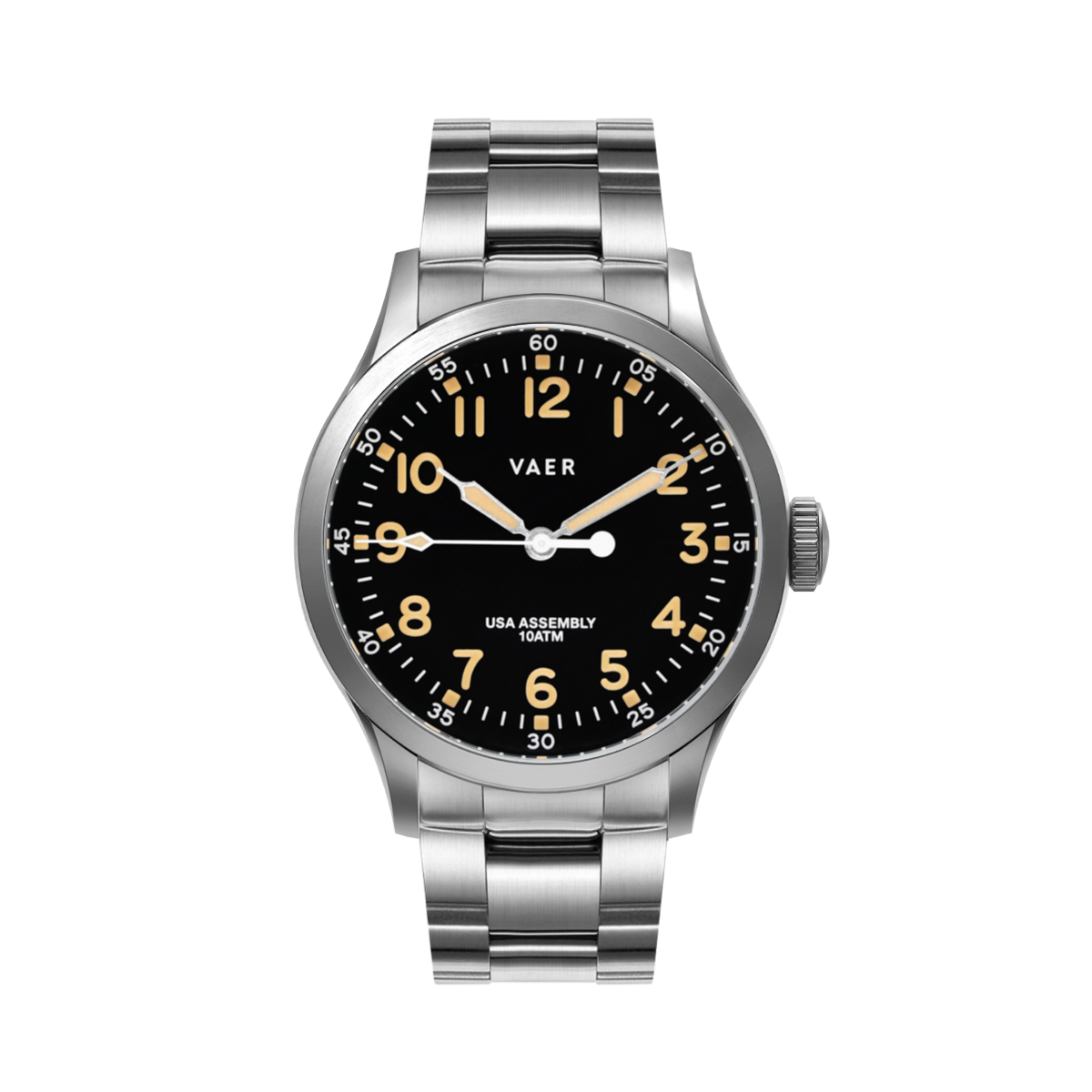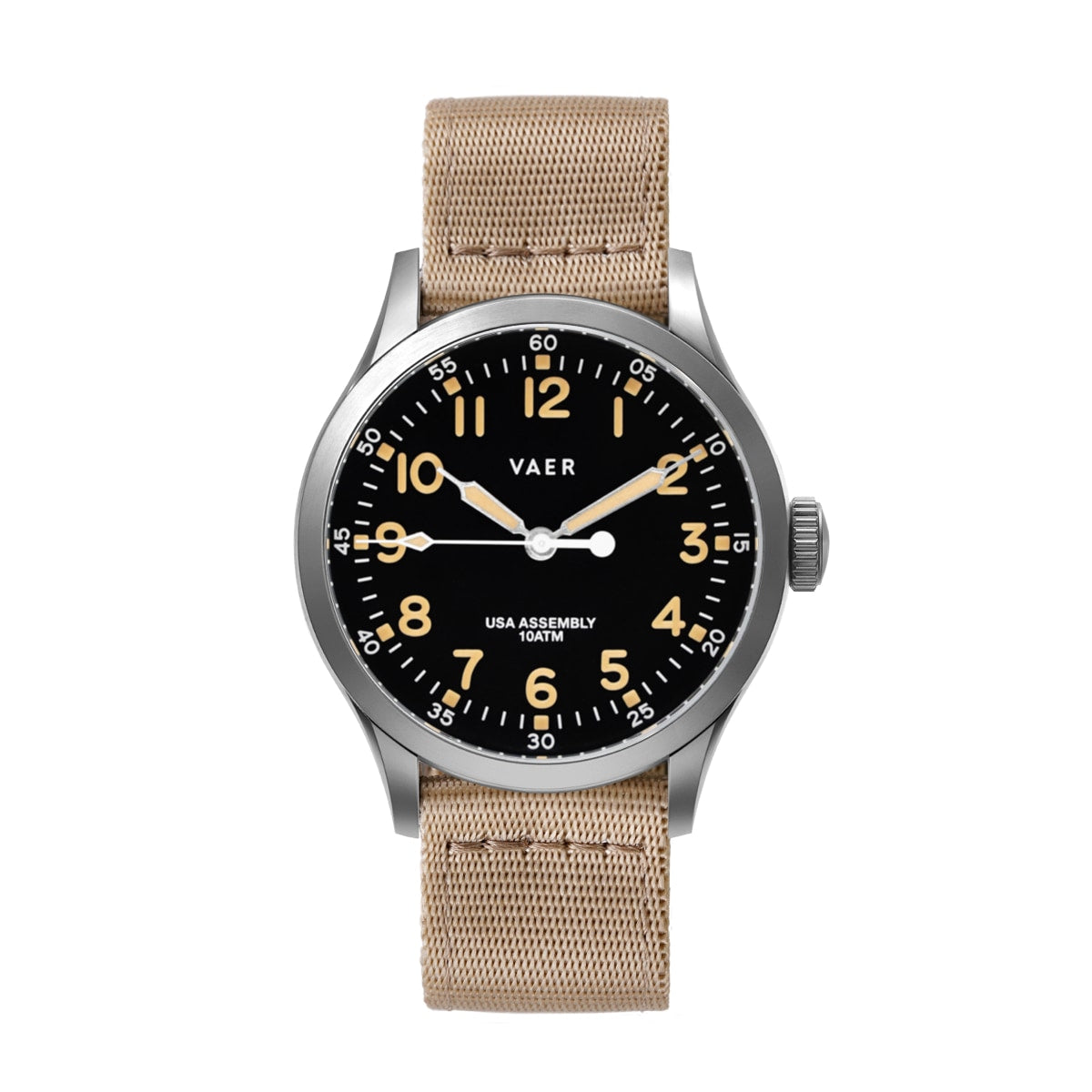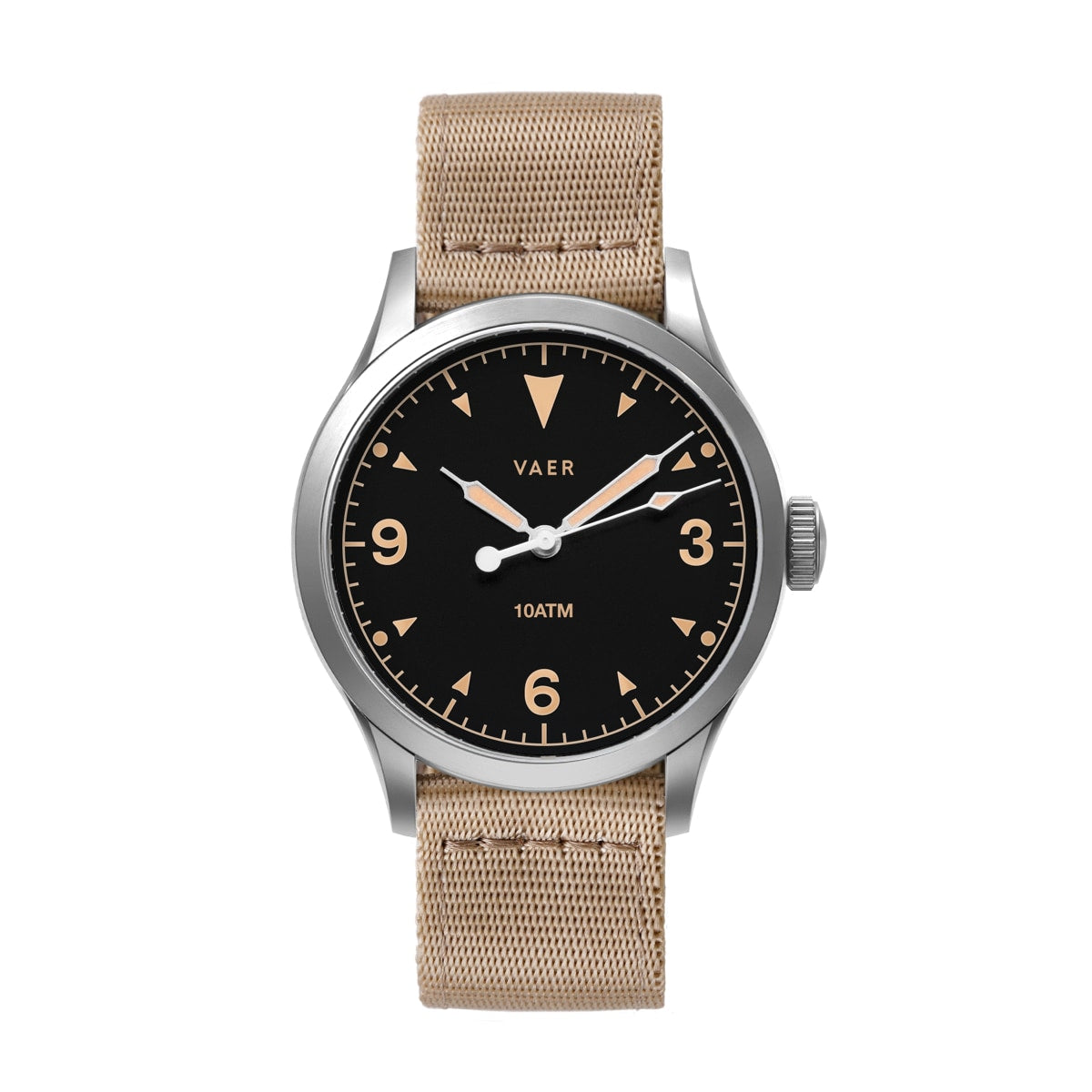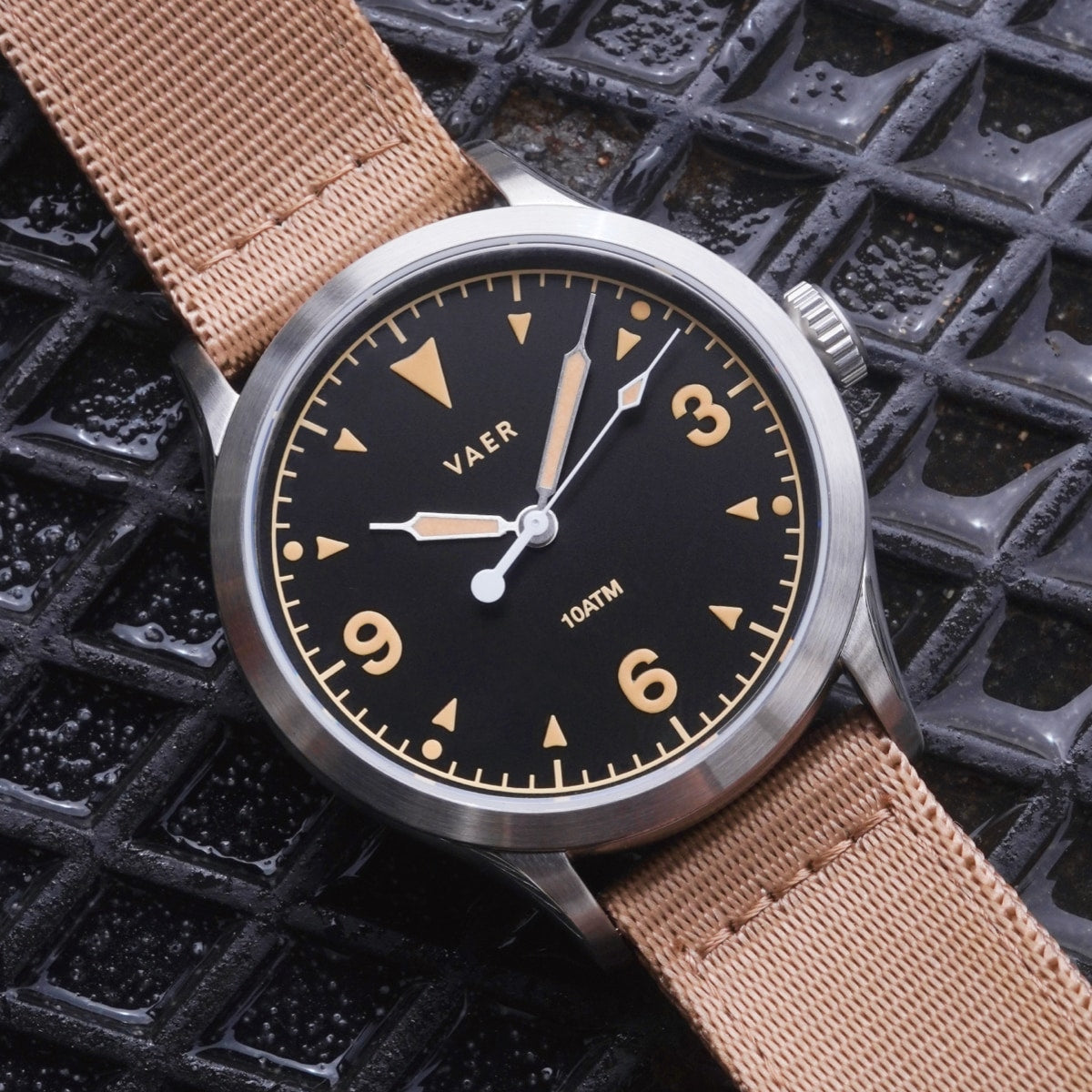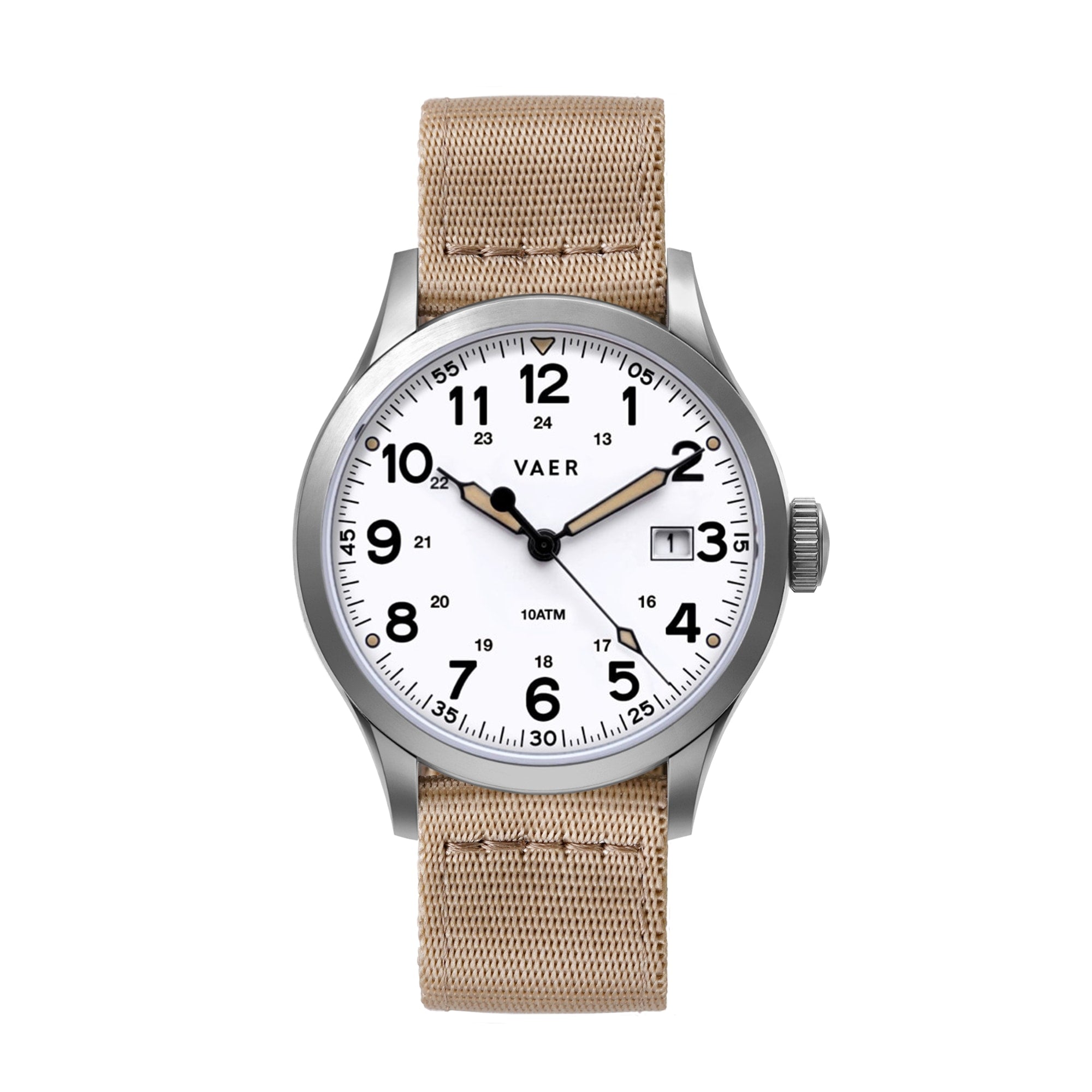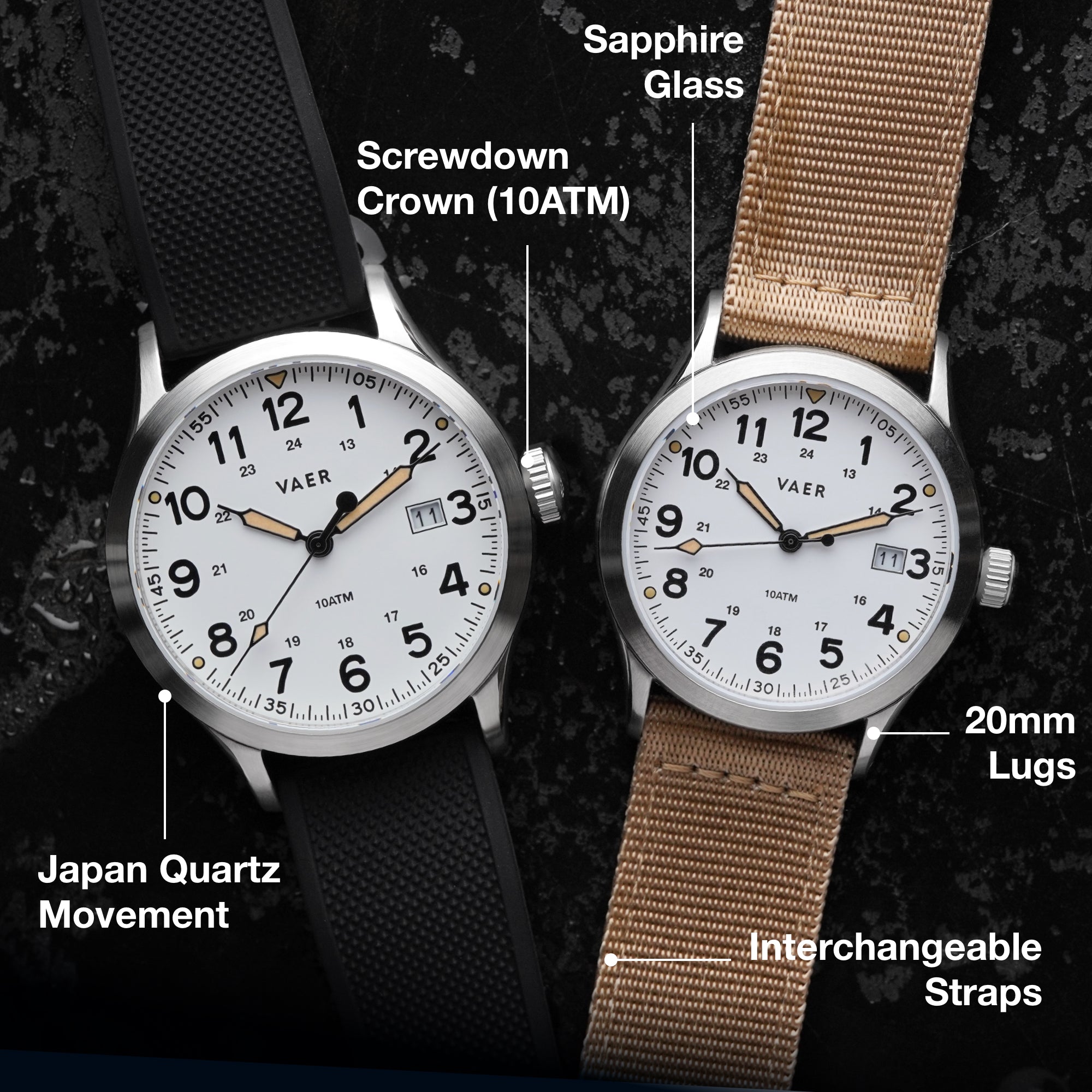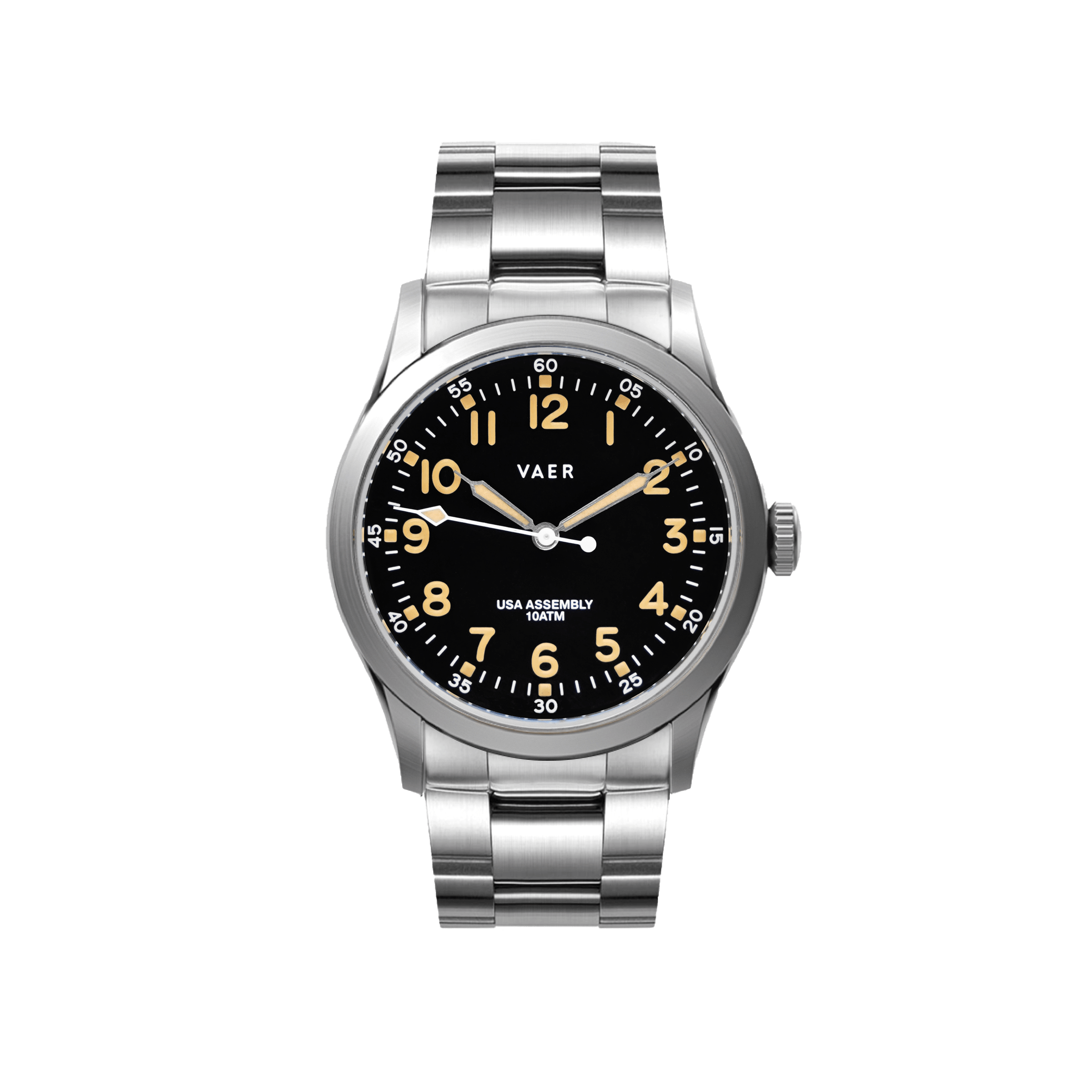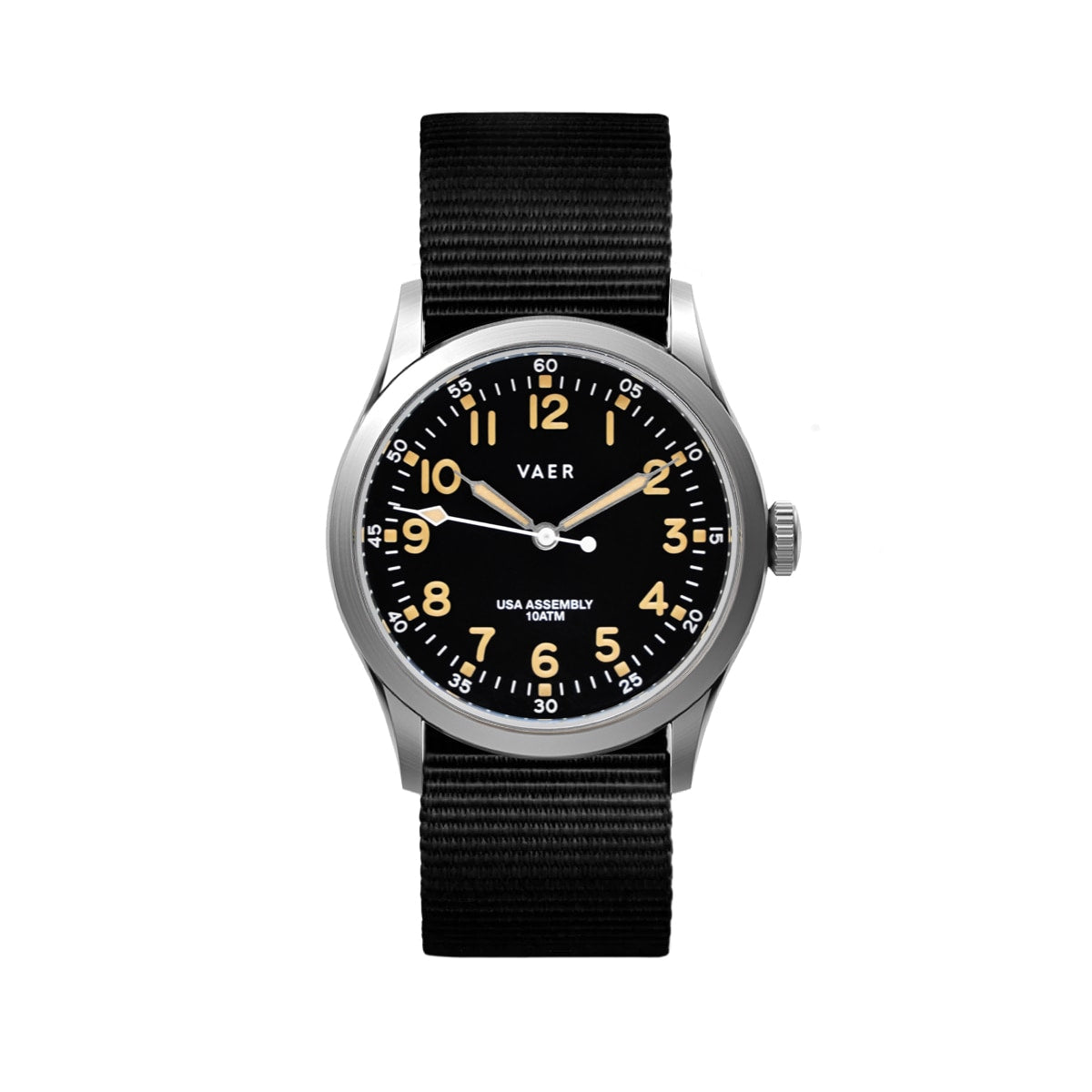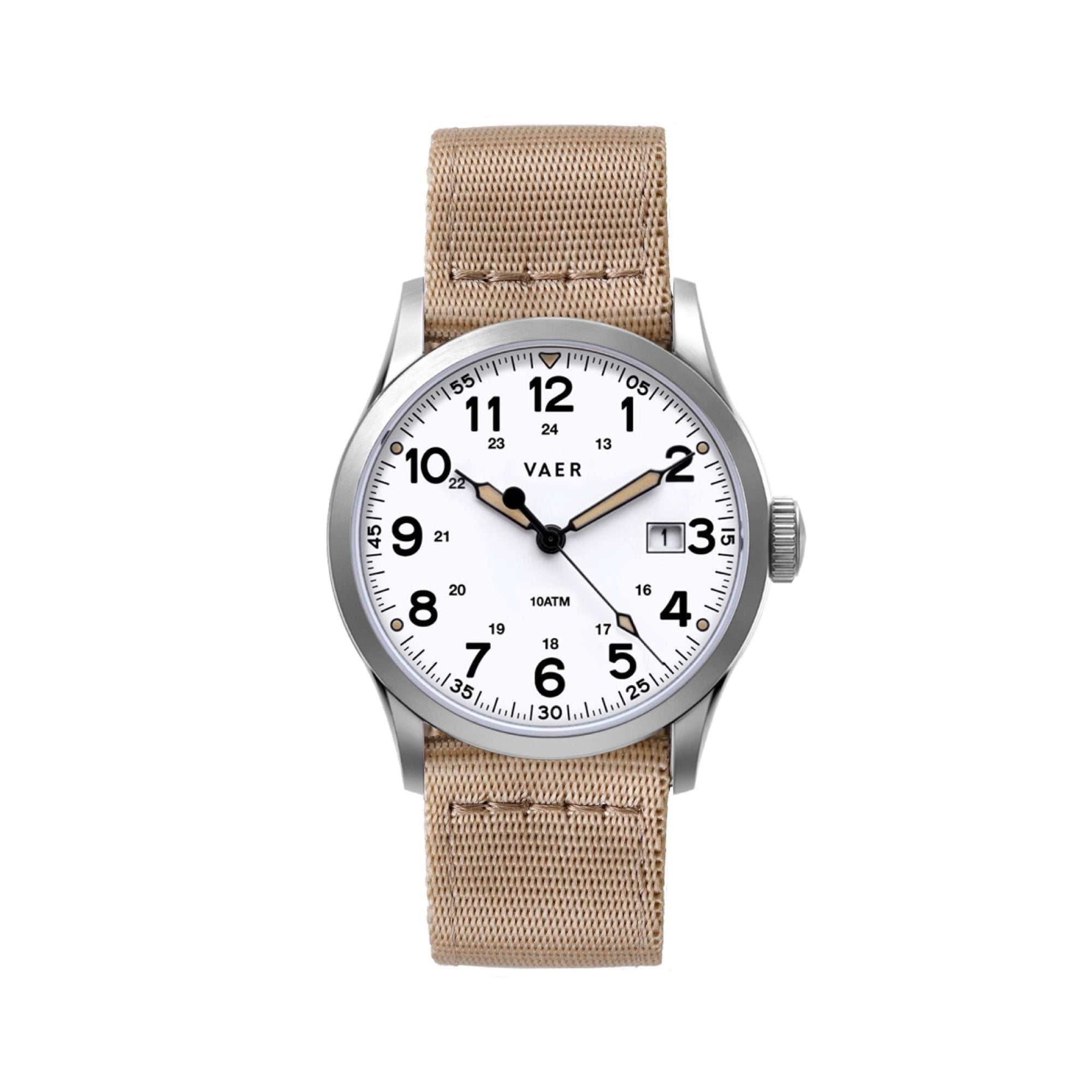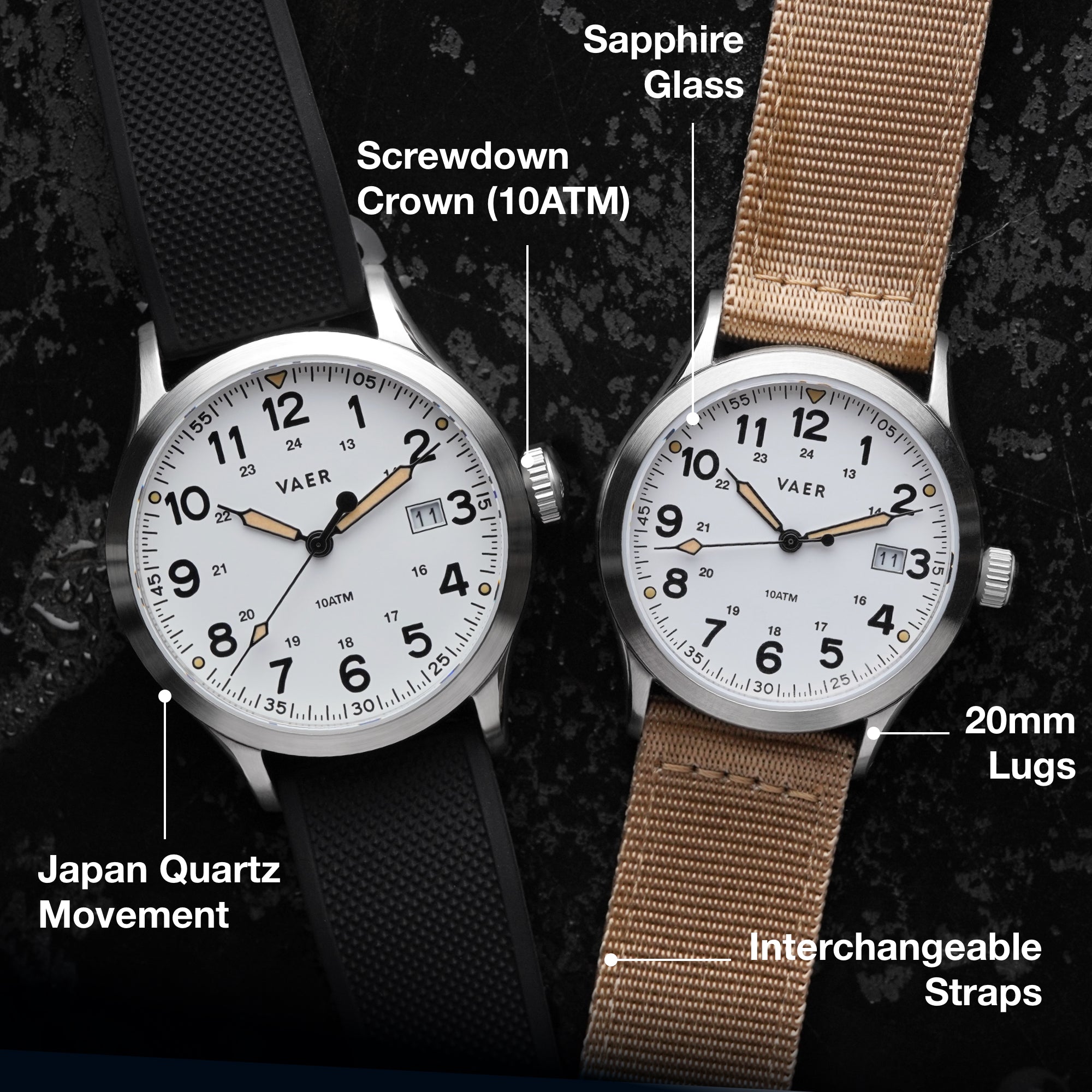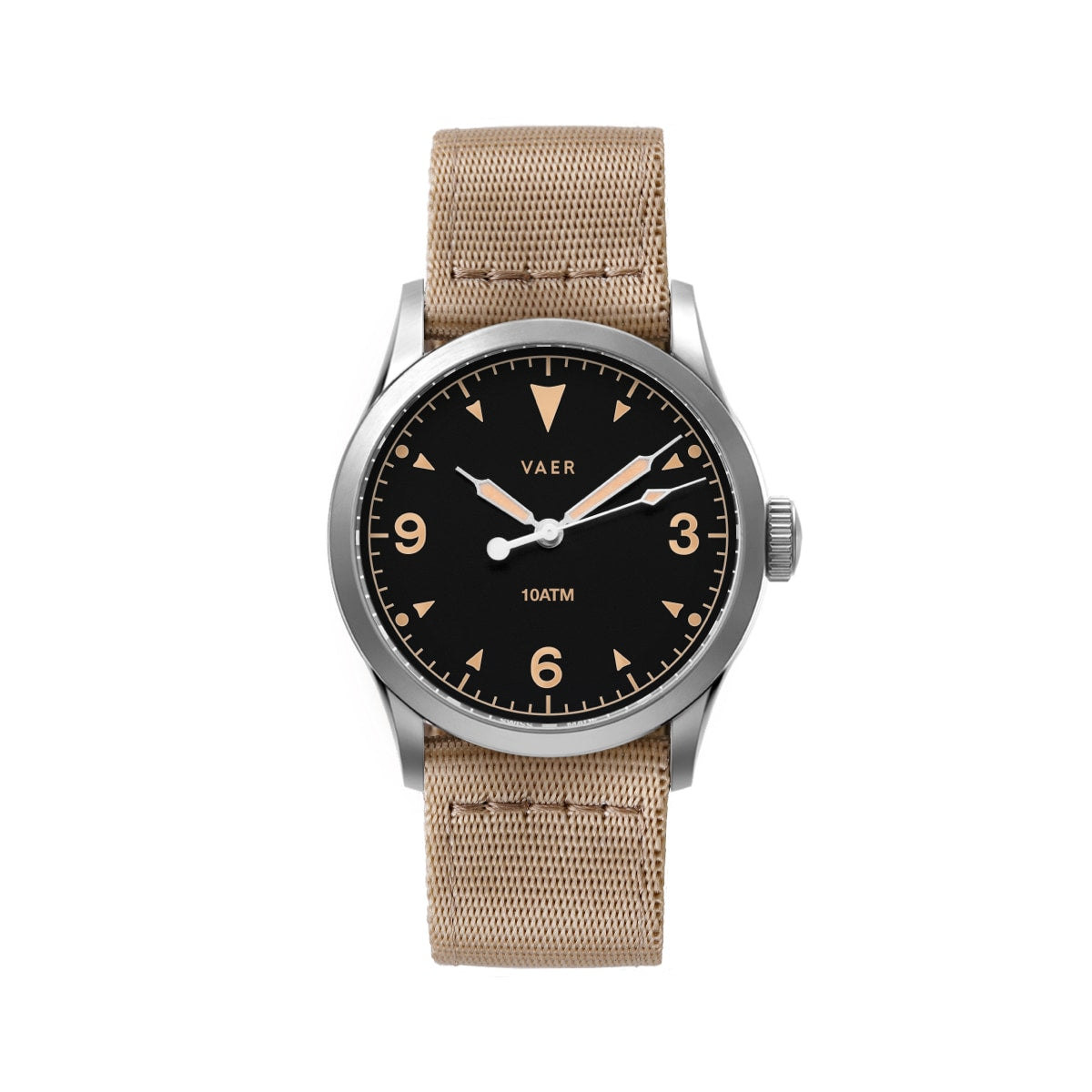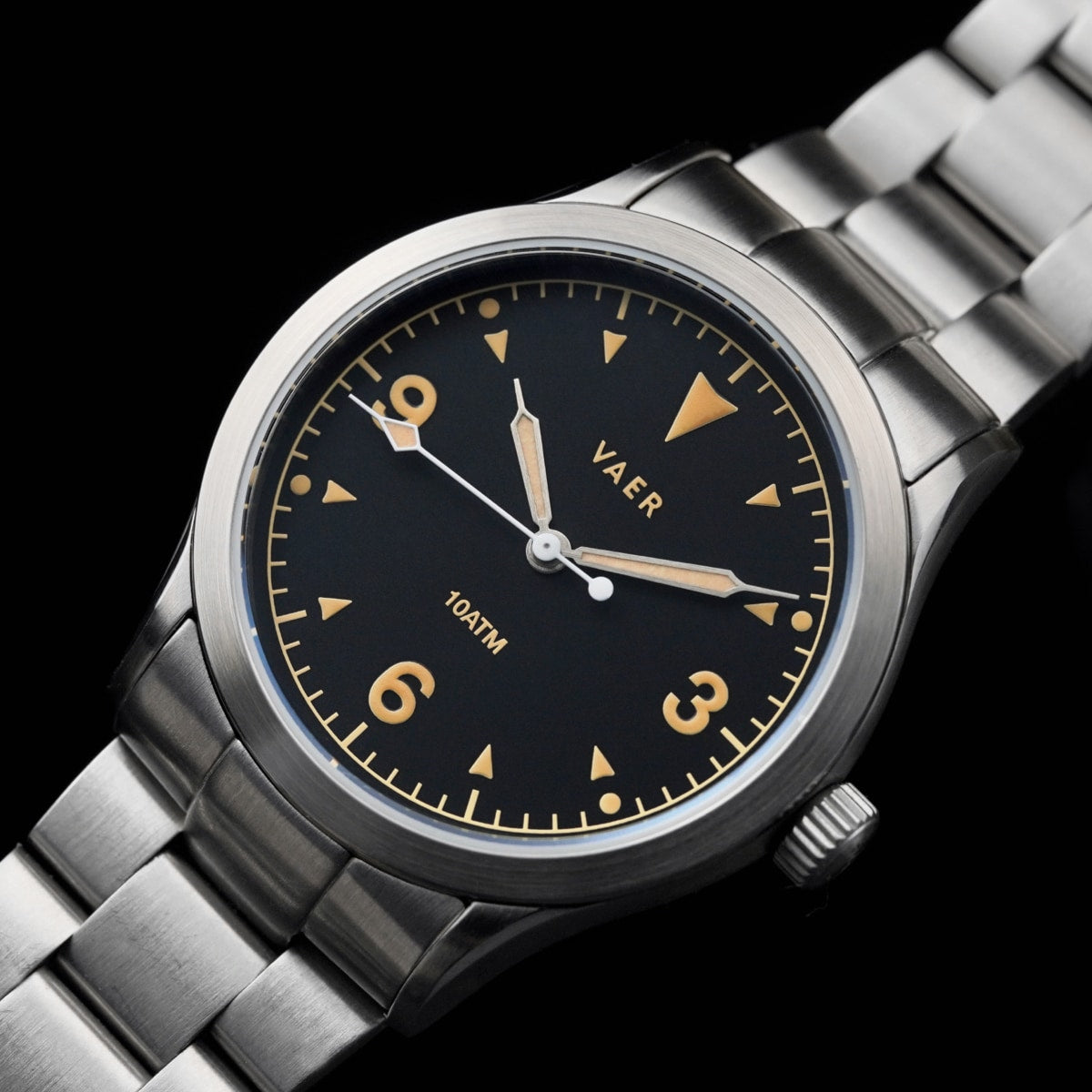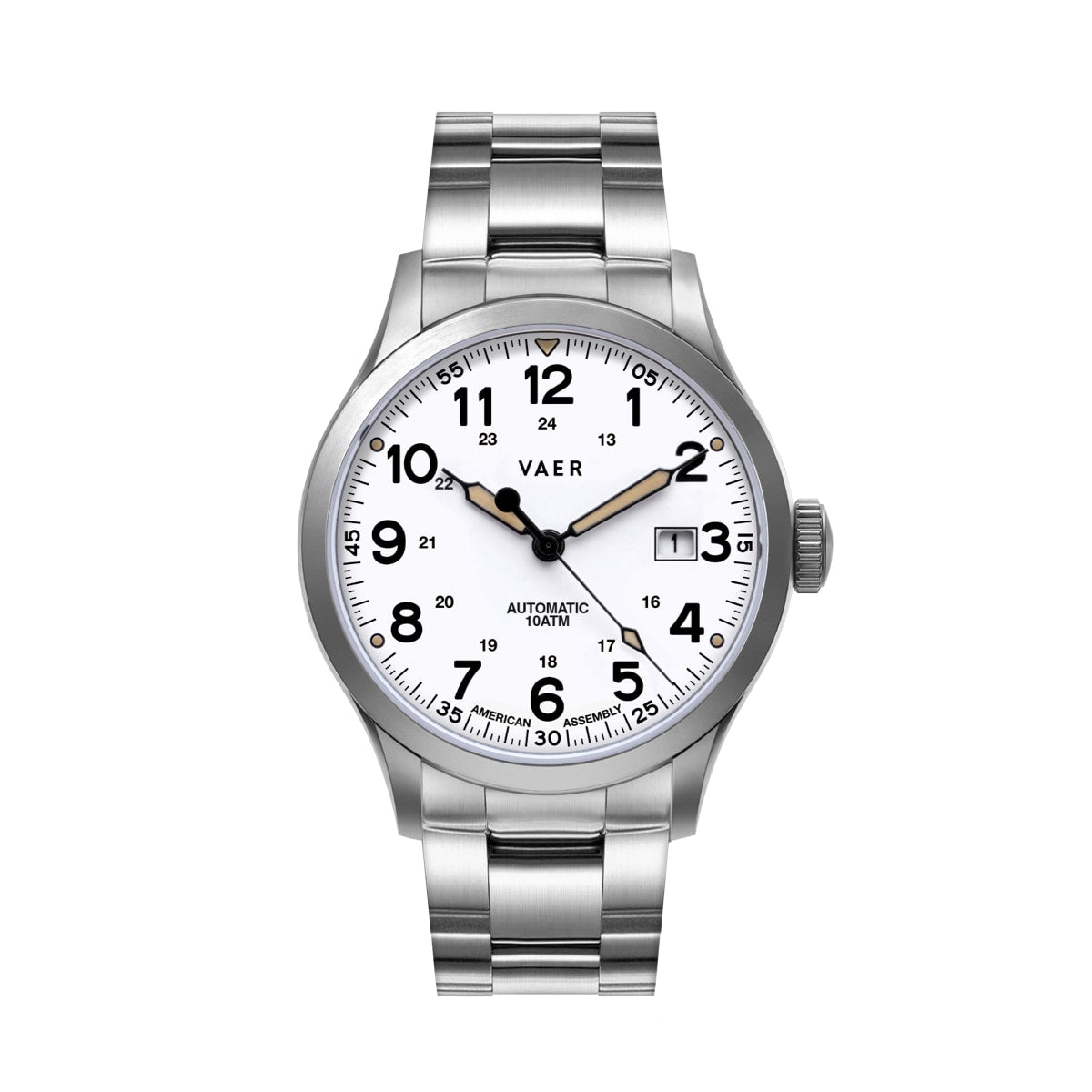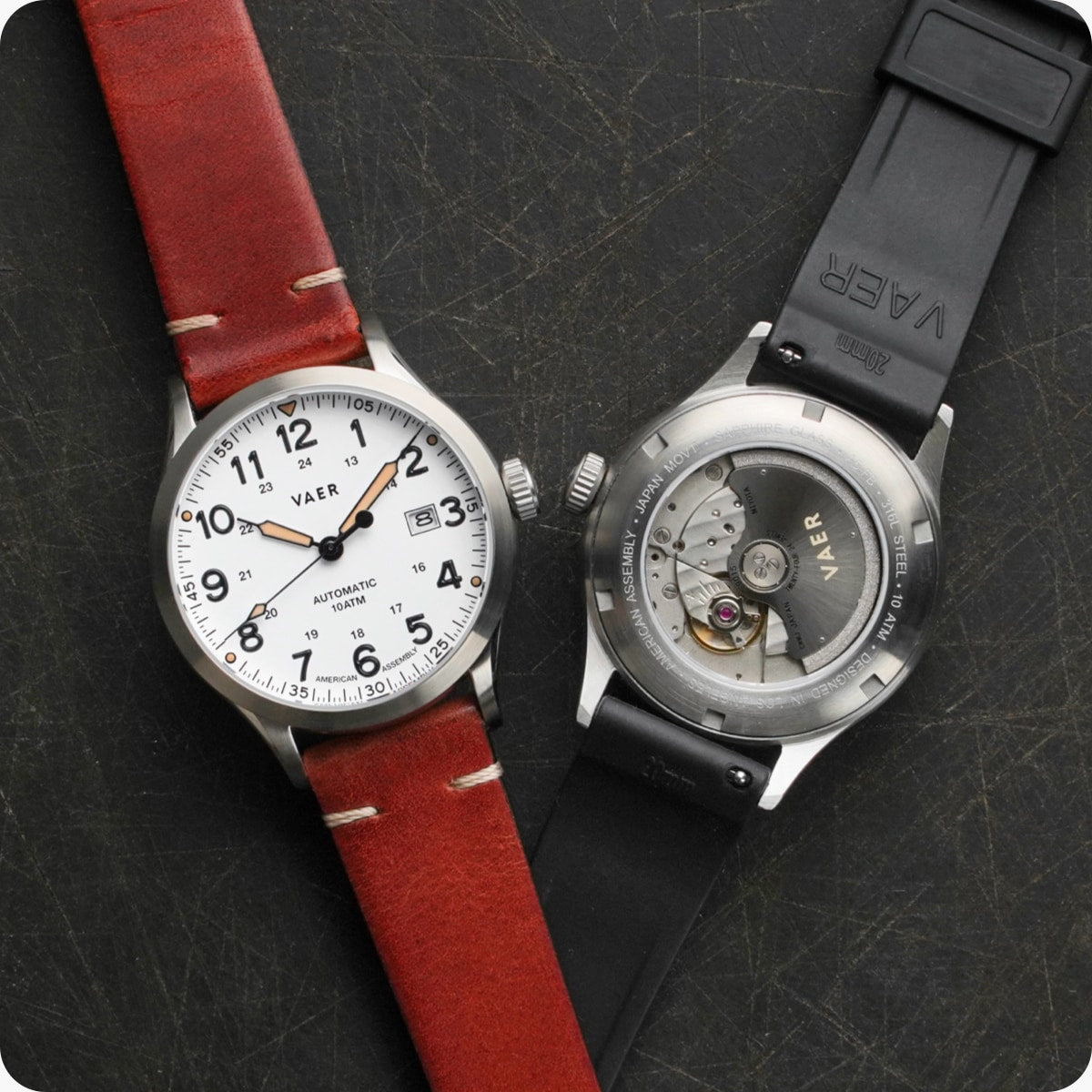Designed to Keep You On-Time Day & Night
Explore Our Lume Collections
We love lume at Vaer, in fact, we’re sort of obsessed with it. Below you'll find a breakdown of all of our favorite Swiss SuperLuminova compounds.
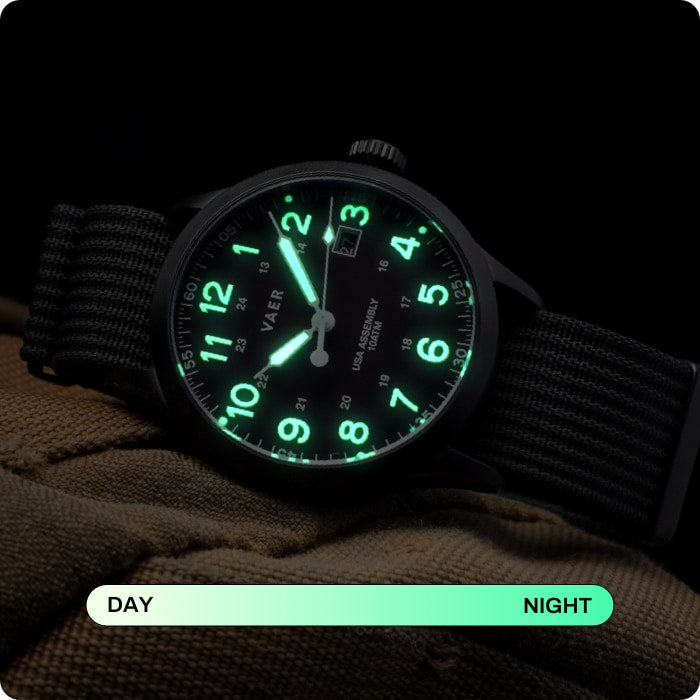
C3 Lume
11 Products
- The brightest lume option
- Appears pale green in daylight.
- Emits a vibrant green glow in the dark.
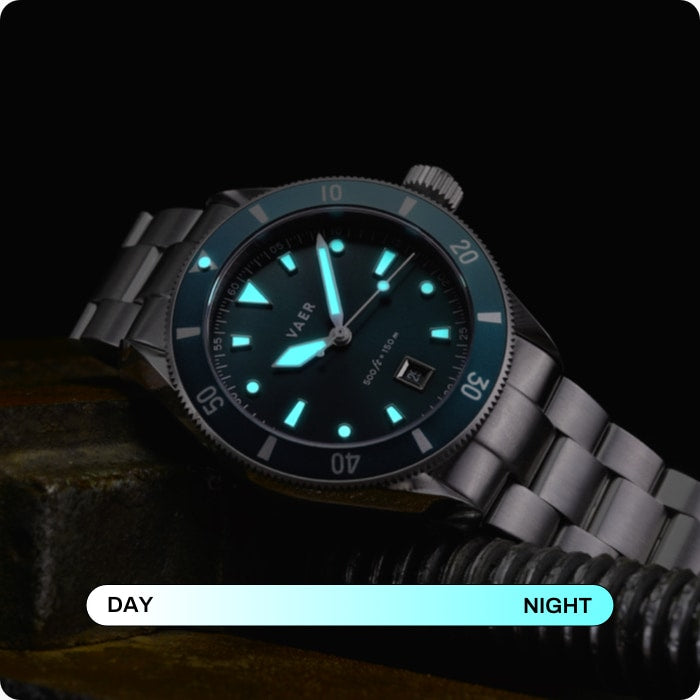
BGW9 Lume
40 Products
- Appears crisp white in daylight.
- Glows in a blue hue at night.
- Less bright than C3 but lasts just as long
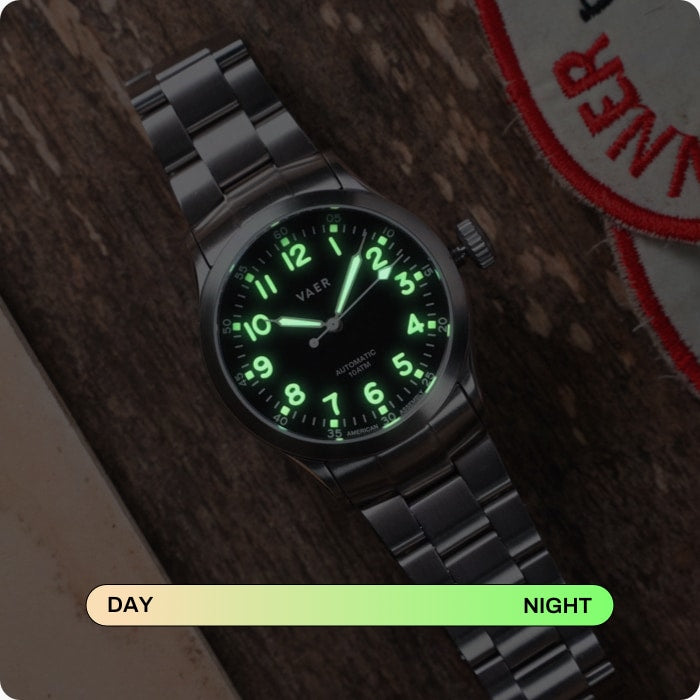
Old Radium Lume
12 Products
- A tan-tinted version of C3
- Mimics the patina of mid-century watches.
- Glows slightly less bright than C3
Ideal for those who want the strongest lume
C3 Lume Watches
C3 is renowned for its brightness, and is the strongest color in the Super-LumiNova scale. which is why many watch enthusiasts refer to it as the brightest Super-LumiNova paint. In daylight or when not glowing, it often appears as a pale green or off-white color on the watch dials or hands. However, in the dark, it shines with a vibrant green hue.
Perfect for a clean, modern aesthetic with excellent visibility
BGW9 Lume Watches
BGW9, unlike C3, glows in a blue hue when in the dark. This paint is the second in strength to C3 in the Super-LumiNova Color Scale. In daylight or when not glowing, BGW9 tends to have a white appearance, making it popular among watch enthusiasts who prefer a more classic look during the day but still want the luminosity in the dark. BGW9 may not have the initial brightness punch that C3 possesses, but it generally has a similar longer-lasting glow.
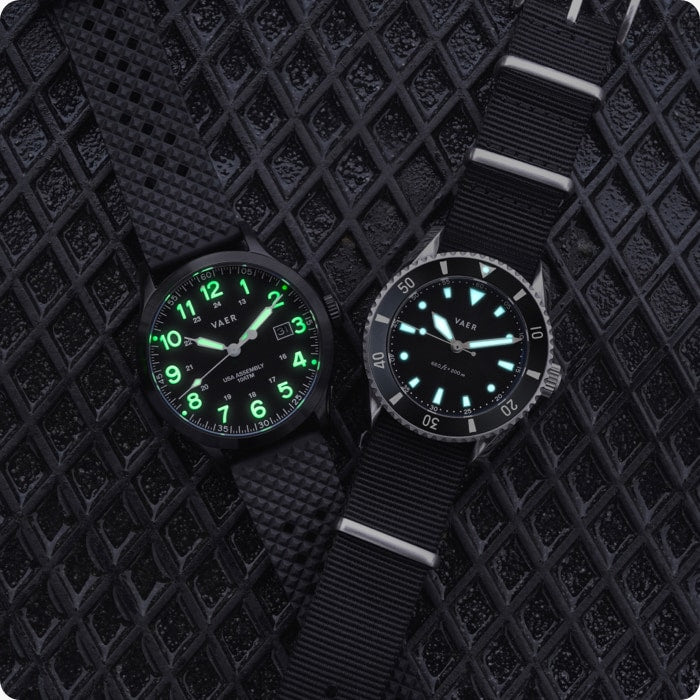
Why does lume paint matter?
As with many aspects of horology, both the technical science and daily functionality of luminous paint is not well understood - even by many veteran collectors.
Read our GuideThe Ultimate Vintage Pantina
Old Radium Lume Watches
While the name is confusing - Old Radium paint is NOT radioactive, and in fact contains no actual radium. It’s simply a tan tinted version of C3 SuperLuminova, that’s mixed with yellow/gold paint to achieve a vintage aesthetic. The reason that it’s called Old Radium is that many vintage time pieces that used radium paint in the 1950s, 1960s and 70s tend to have a consistent patina in which the original white lume paint yellows or “tans” over time.


